
120 Ultimate Programming and Coding Fonts: The Ultimate Arsenal for Developer Productivity
In the coding world, your choice of font goes beyond personal preference; it's a strategic decision that can significantly impact productivity and reduce eye strain during coding marathons. Our curated collection of coding fonts is a comprehensive resource to help you find the ideal typeface that elevates your programming skills.
Whether you're a seasoned developer or new to coding, our list of coding fonts offers options for clarity, creativity, and a touch of nostalgia, making it easy to find the perfect font that matches your coding style. Your font choice can be a potent tool to unlock your coding potential, increase efficiency, and enhance your overall coding experience. Explore our carefully curated assortment of coding fonts and embark on a journey to discover the typeface that motivates and empowers you in the ever-evolving world of programming. Happy coding!
1. 3270 (Ricardo Bánffy, 2015)
3270 is a monospaced font created by Ricardo Bánffy in 2015. It draws inspiration from the classic IBM 3270 terminal typeface. With its distinctive retro appearance, the 3270 is a popular choice for adding a nostalgic touch to coding and design projects.
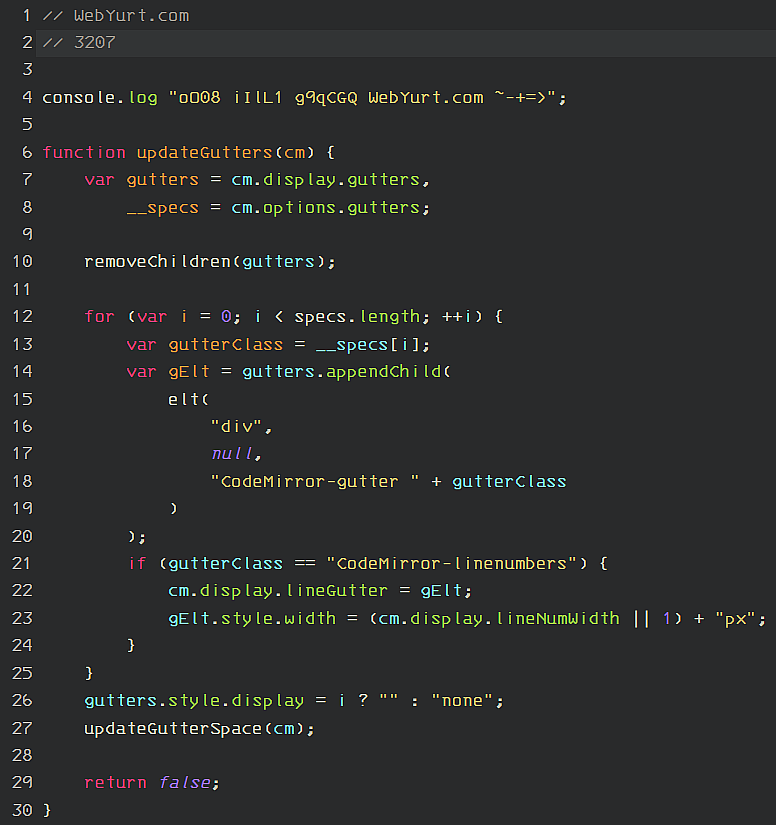
2. APL2741 (Adrian Smith, 2003)
APL2741, designed by Adrian Smith in 2003, is a monospaced font tailored for the APL programming language. Its unique characters and layout cater to the specialized needs of APL programmers, ensuring optimal readability and clarity.
3. APL385 (Adrian Smith, 2003)
Also created by Adrian Smith in 2003, APL385 is another monospaced font specifically crafted for the APL programming language. It offers a distinct character set and layout to enhance the coding experience for APL enthusiasts.
4. Agave (agaric, 2013)
Agave, designed by Agaric in 2013, is a monospaced font featuring a clean and modern design. Its simplicity makes it a versatile choice for various design and coding applications, offering both readability and style.
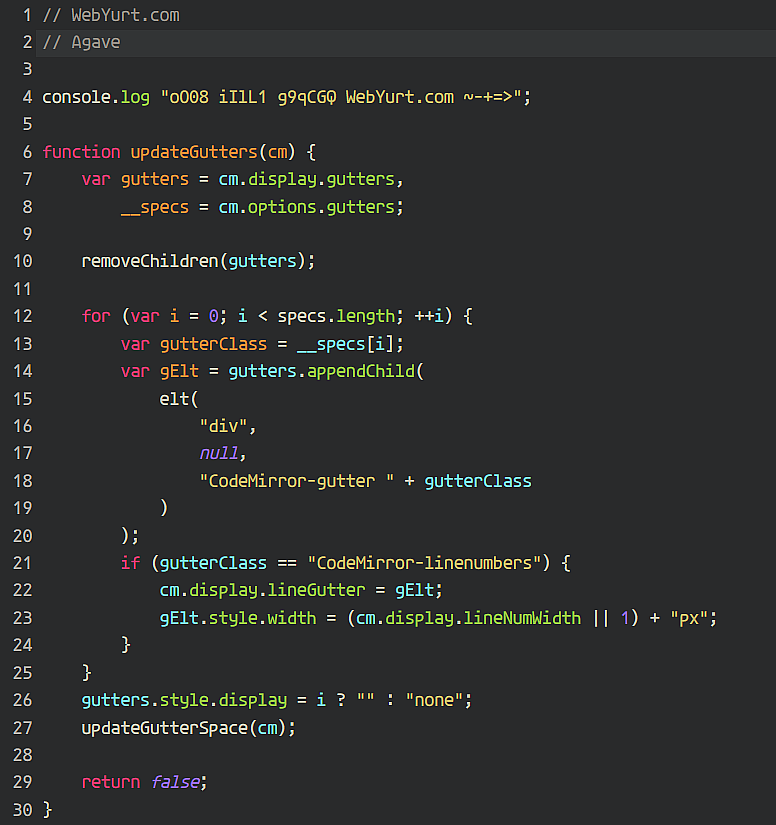
5. Anka/Coder (Andrey Makarov, 2010)
Anka/Coder, created by Andrey Makarov in 2010, is a monospaced font designed with a focus on legibility and readability. It is well-suited for coding tasks, ensuring that code is easily distinguishable and clear.

6. Anonymous Pro (Mark Simonson, 2009)
Anonymous Pro, designed by Mark Simonson in 2009, is a monospaced font known for its clarity and versatility. It offers a professional appearance, making it an excellent choice for coding, technical documents, and creative coding projects.

7. Aurulent Sans Mono (Stephen G. Hartke, 2007)
Aurulent Sans Mono, created by Stephen G. Hartke in 2007, is a monospaced font with a clean and legible design. It provides a clear and straightforward appearance that suits coding and technical writing.
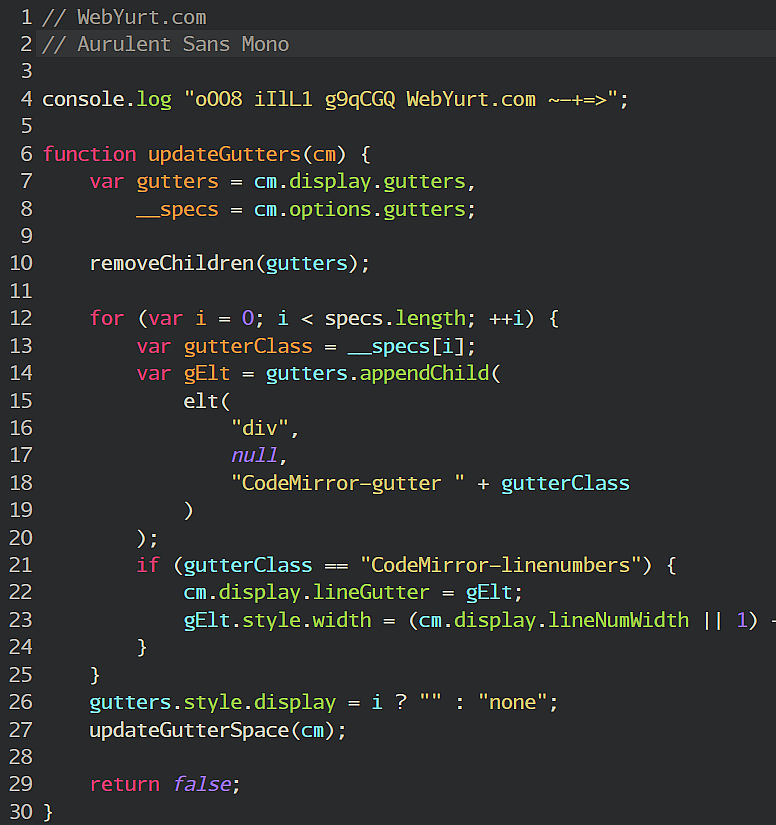
8. Average Mono (Richard Alexander Hall, 2013)
Average Mono, designed by Richard Alexander Hall in 2013, is a monospaced font with a modern and balanced style. Its legible letterforms make it a dependable choice for various design and text-based projects.
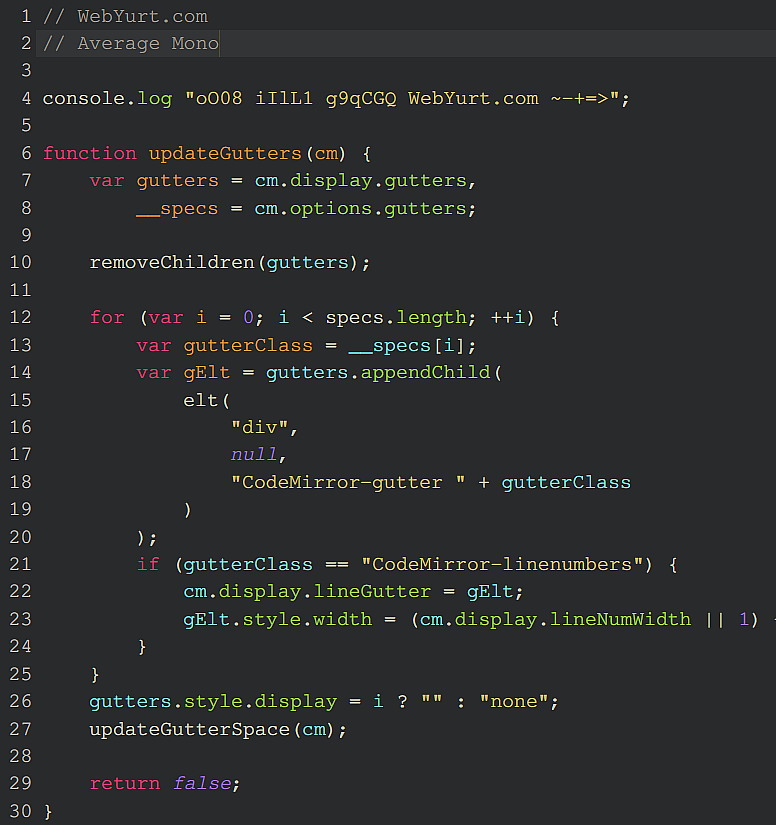
9. B612 Mono (Nicolas Chauveau, Thomas Paillot, Jonathan Favre-Lamarine, 2012)
B612 Mono, collaboratively created by Nicolas Chauveau, Thomas Paillot, and Jonathan Favre-Lamarine in 2012, is a monospaced font known for its clarity and readability. It is well-suited for coding and technical documentation.
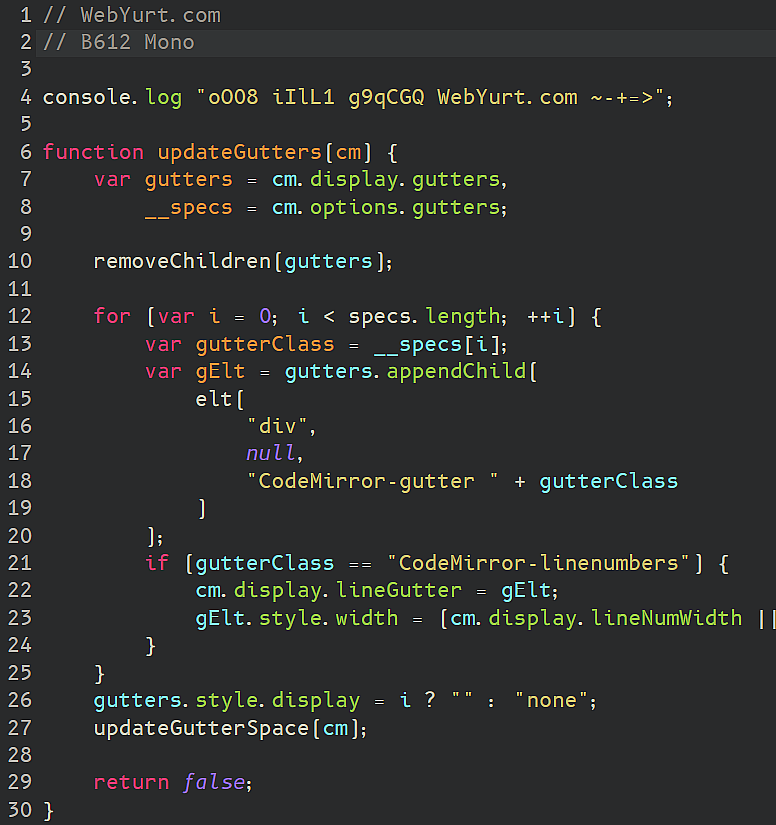
10. BPmono (Backpacker, 2007)
BPmono, created by Backpacker in 2007, is a monospaced font with a simple and practical design. It offers straightforward letterforms that work well for coding and programming tasks.
11. Bedstead (Ben Harris, 2018)
Bedstead, designed by Ben Harris in 2018, is a monospaced font that draws inspiration from the classic DEC VT320 terminal typeface. Its retro charm makes it an appealing choice for nostalgic or vintage-themed projects.
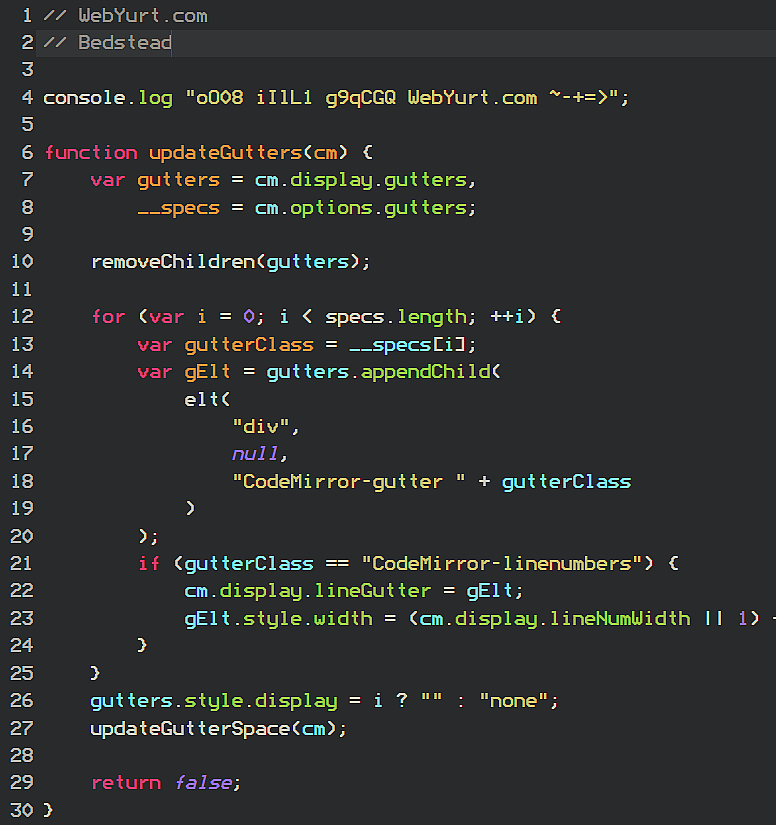
12. Bitstream Vera Sans Mono (Jim Lyles, 2002)
Bitstream Vera Sans Mono, created by Jim Lyles in 2002, is a monospaced font known for its balanced design and wide character support. It is a versatile choice for coding, technical documents, and more.

13. Borg Sans Mono (Marnen E. Laibow-Koser, 2016)
Borg Sans Mono, designed by Marnen E. Laibow-Koser in 2016, is a monospaced font with a distinct and modern appearance. Its unique style sets it apart, making it suitable for various design and coding applications.
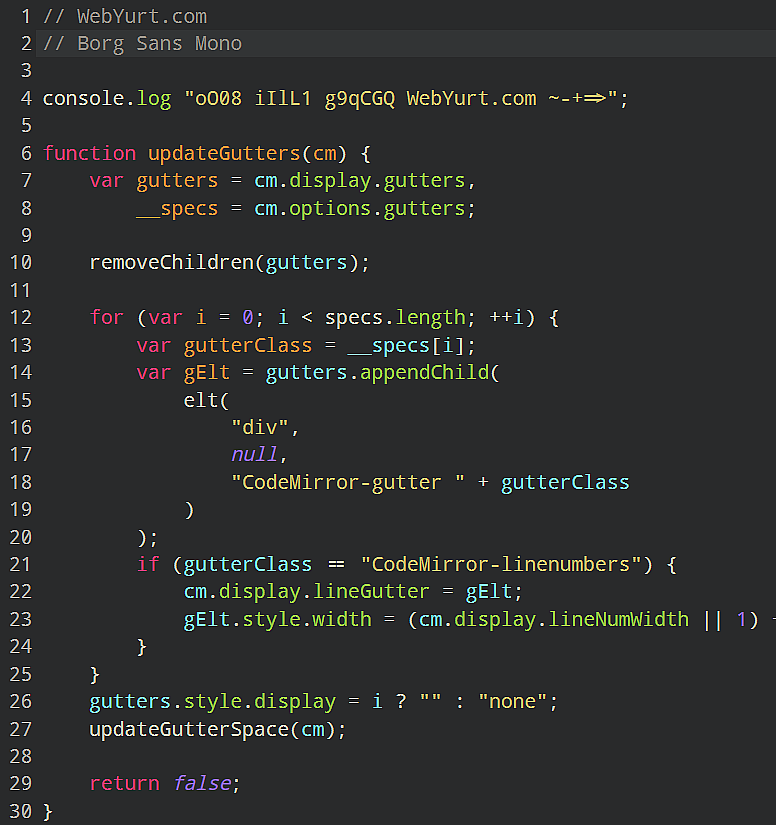
14. Bront DejaVu Sans Mono (Chris Wendt, 2015)
Bront DejaVu Sans Mono, created by Chris Wendt in 2015, is a monospaced font that belongs to the DejaVu font family. It offers a balance of legibility and style, making it a versatile choice for design and code.
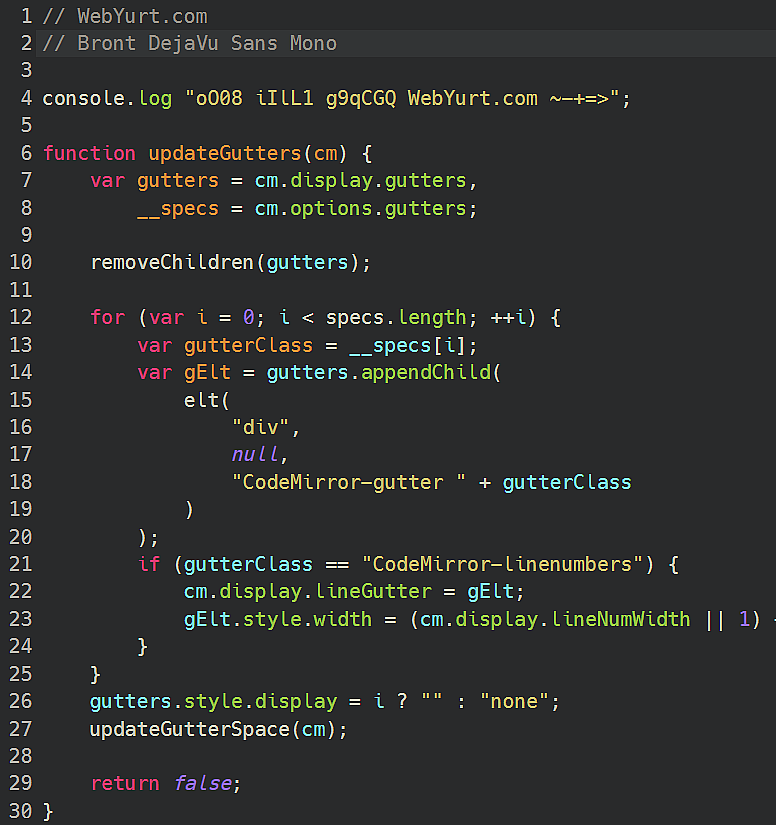
15. Bront Ubuntu Mono (Chris Wendt, 2015)
Bront Ubuntu Mono, also designed by Chris Wendt in 2015, is a monospaced font from the Ubuntu font family. It provides a clean and readable appearance, ideal for coding and technical documents.
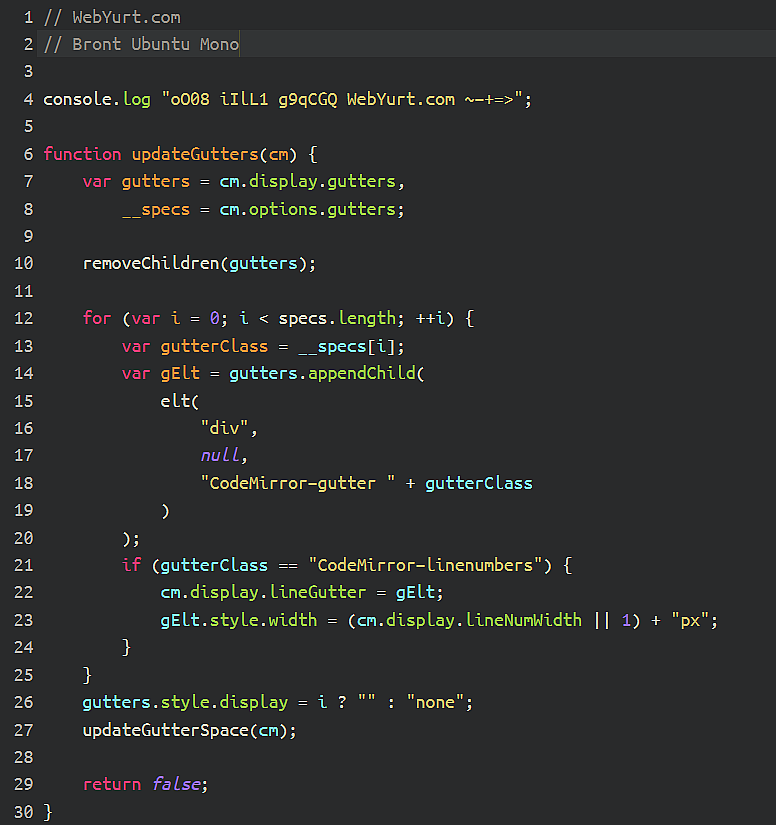
16. CamingoCode (Jan Fromm, 2013)
CamingoCode, created by Jan Fromm in 2013, is a monospaced font known for its clarity and modern design. It is optimized for coding tasks, ensuring that code is easy to read and work with.

17. Cartograph (Connary Fagen, 2016)
Cartograph, designed by Connary Fagen in 2016, is a monospaced font with a unique and distinctive style. Its bold and geometric appearance makes it an interesting choice for creative projects and design work.
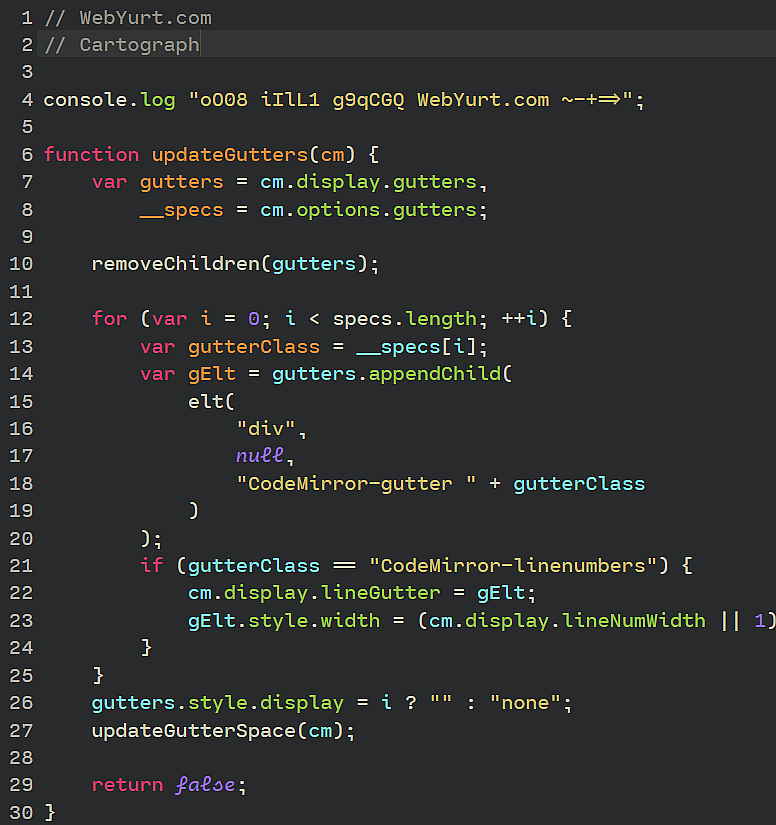
18. Cascadia Code (Aaron Bell, 2019)
Cascadia Code, created by Aaron Bell in 2019, is a monospaced font designed specifically for use with Microsoft's Visual Studio Code editor. It features a clean and legible design tailored for coding tasks.
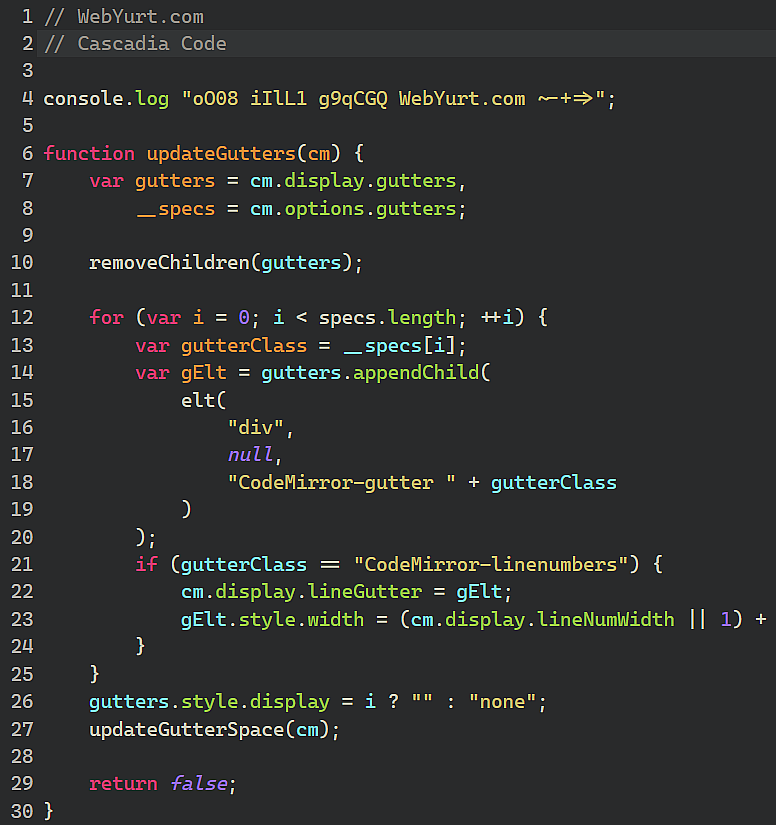
19. Code New Roman (Samiru R., 2014)
Code New Roman, designed by Samiru R. in 2014, is a monospaced font that draws inspiration from the classic Times New Roman typeface. It offers a timeless and readable style suitable for various projects.

20. Comic Shanns (Shannon Miwa, 2018)
Comic Shanns, created by Shannon Miwa in 2018, is a monospaced font that brings a playful and comic book-inspired style to the text. It adds a fun and whimsical touch to design and creative projects.
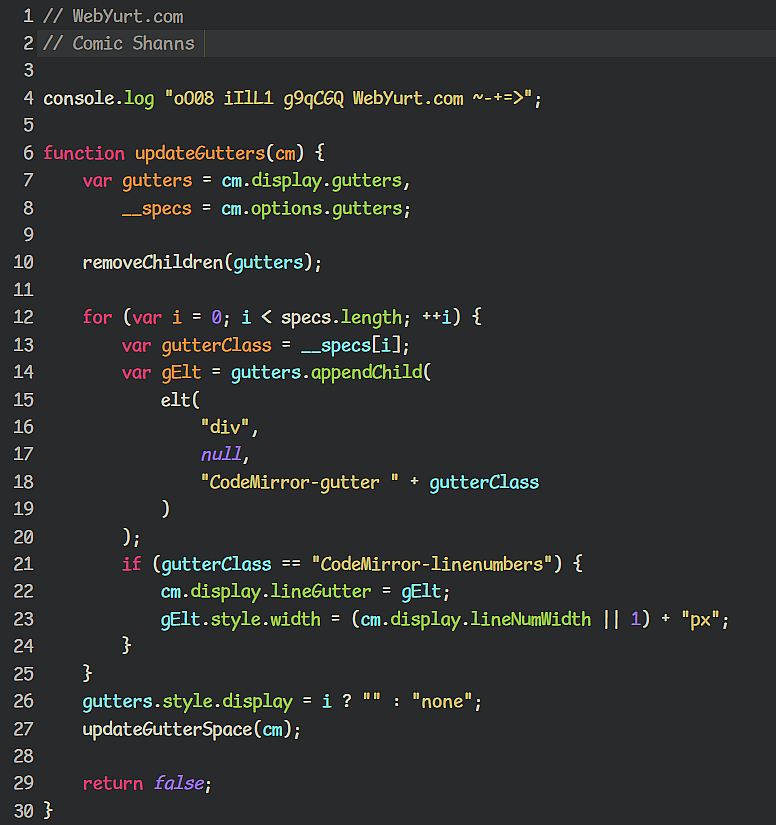
21. Consolamono (Wojciech Kalinowski, 2011)
Consolamono, designed by Wojciech Kalinowski in 2011, is a monospaced font known for its clean and legible design. It is well-suited for coding and programming tasks, offering excellent readability.
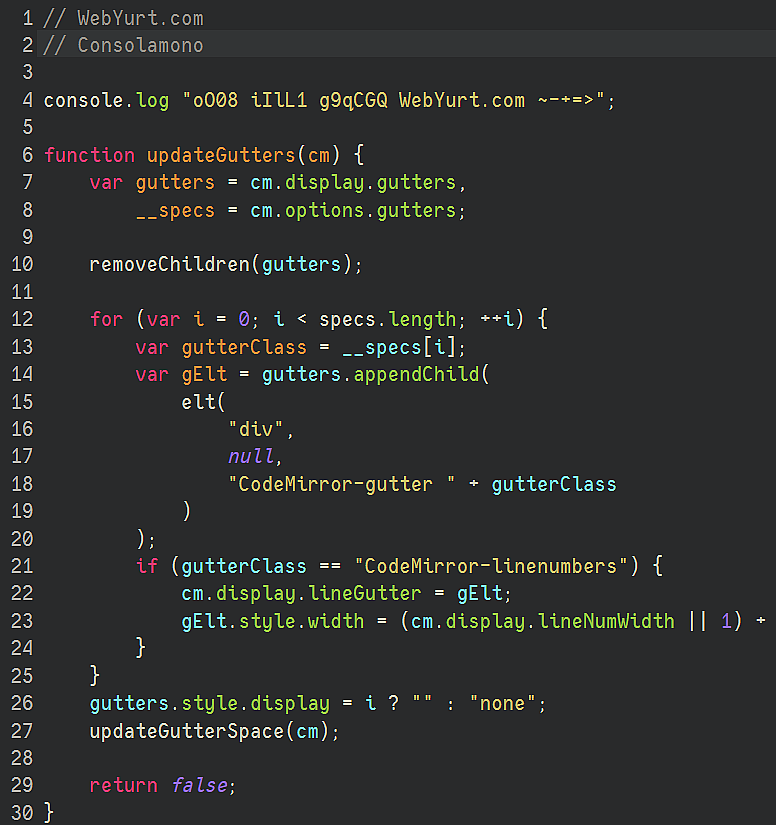
22. Courier Prime (Alan Dague-Greene, 2013)
Courier Prime, created by Alan Dague-Greene in 2013, is a modern take on the classic Courier font. It offers a clean and professional appearance, making it a versatile choice for documents, code, and more.
23. Courier Prime Code (Alan Dague-Greene, 2013)
Courier Prime Code, also designed by Alan Dague-Greene in 2013, is a monospaced font optimized for coding and programming. It inherits the clean and professional style of Courier Prime.
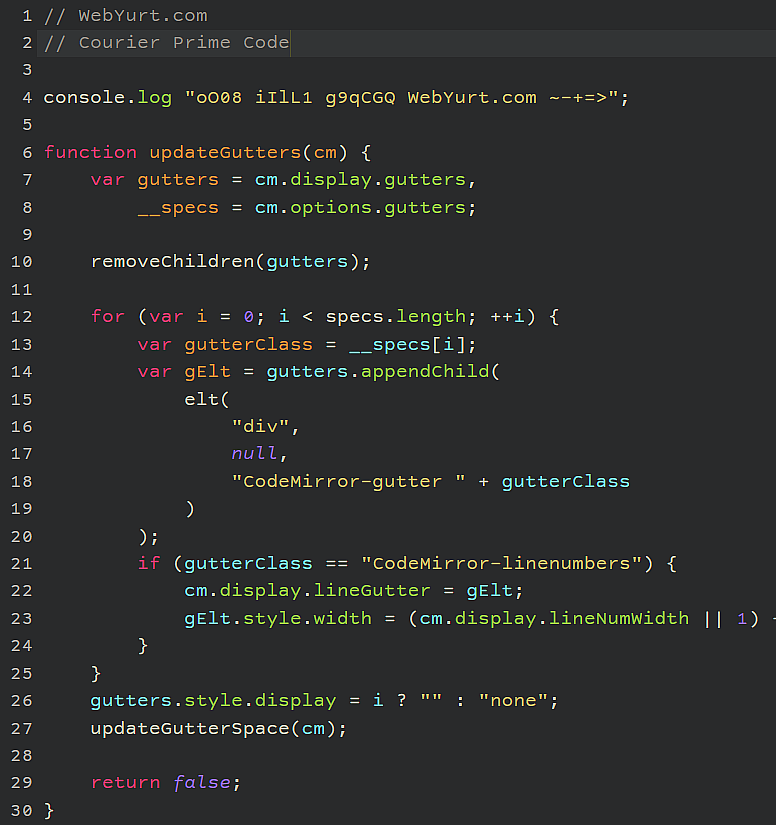
24. Cousine (Steve Matteson, 2010)
Cousine, created by Steve Matteson in 2010, is a monospaced font known for its clarity and readability. It is a versatile choice for coding, technical documents, and text-based projects.
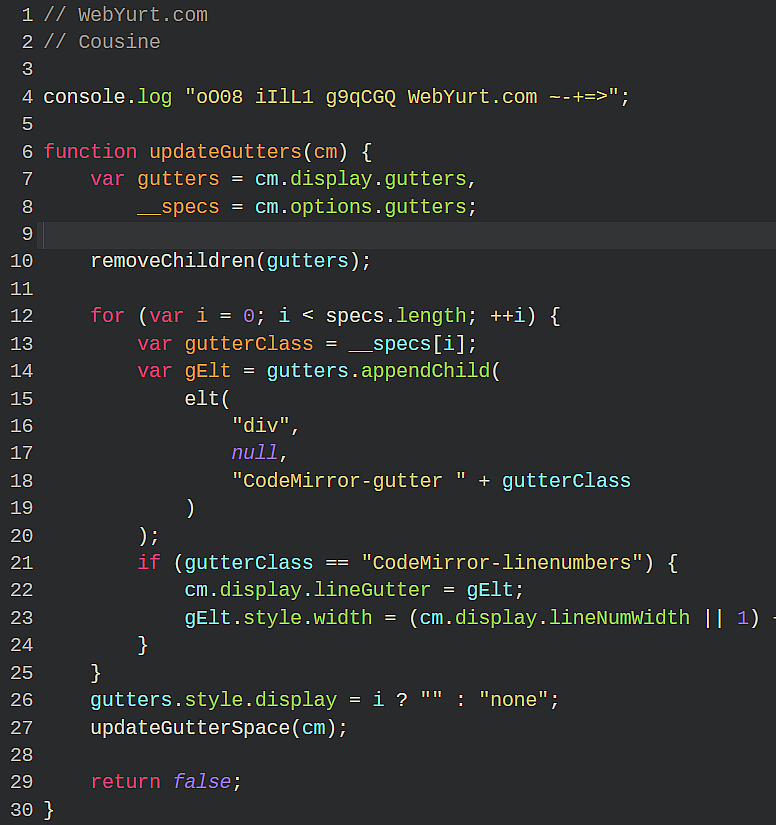
25. Cozette (Slavfox, 2020)
Cozette, designed by Slavfox in 2020, is a monospaced font with a unique and charming style. Its distinctive appearance makes it suitable for creative and artistic projects.
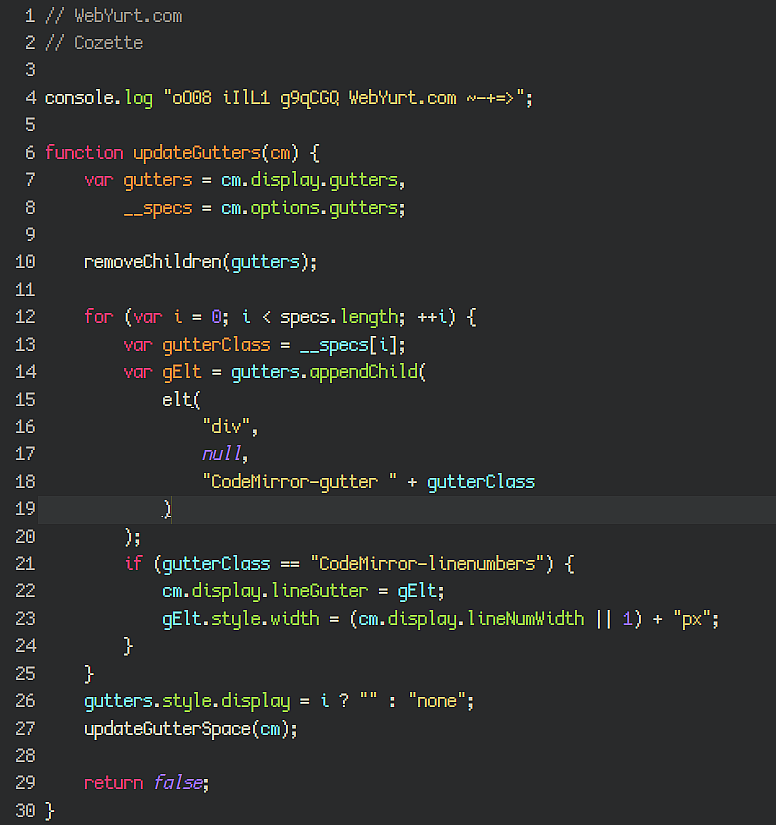
26. Cutive Mono (Vernon Adams, 2012)
Cutive Mono, created by Vernon Adams in 2012, is a monospaced font known for its simple and elegant design. It offers a clean and readable appearance, ideal for coding and documents.
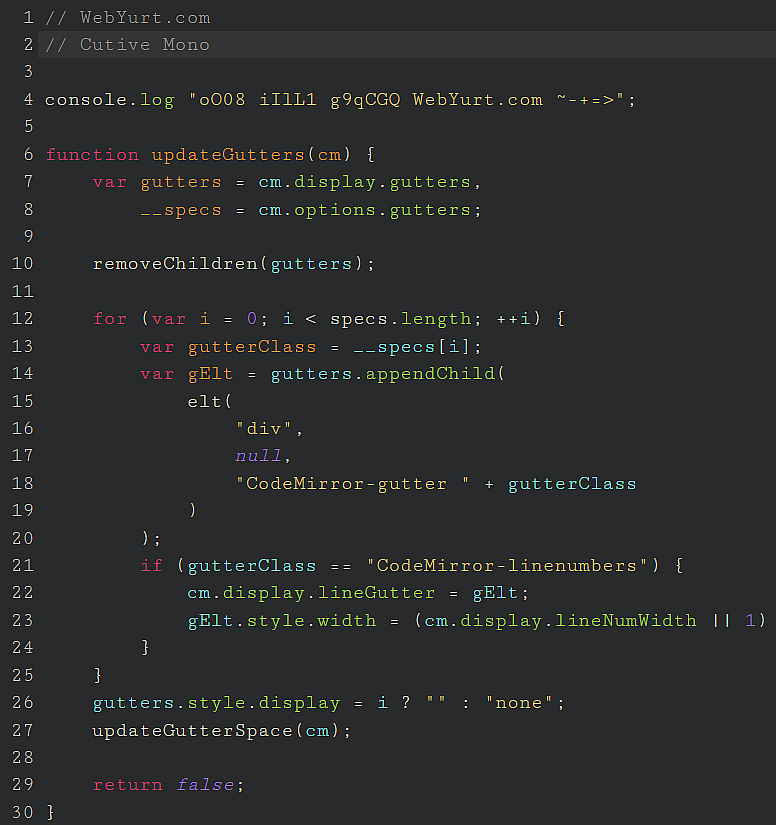
27. D2Coding (NAVER Corp., 2016)
D2Coding, developed by NAVER Corp. in 2016, is a monospaced font designed for coding and programming tasks. It offers a clear and modern style for code readability.

28. DaddyTimeMono (Jason Stewart, 2017)
DaddyTimeMono, designed by Jason Stewart in 2017, is a monospaced font with a straightforward and practical design. It is suitable for coding and technical documents.
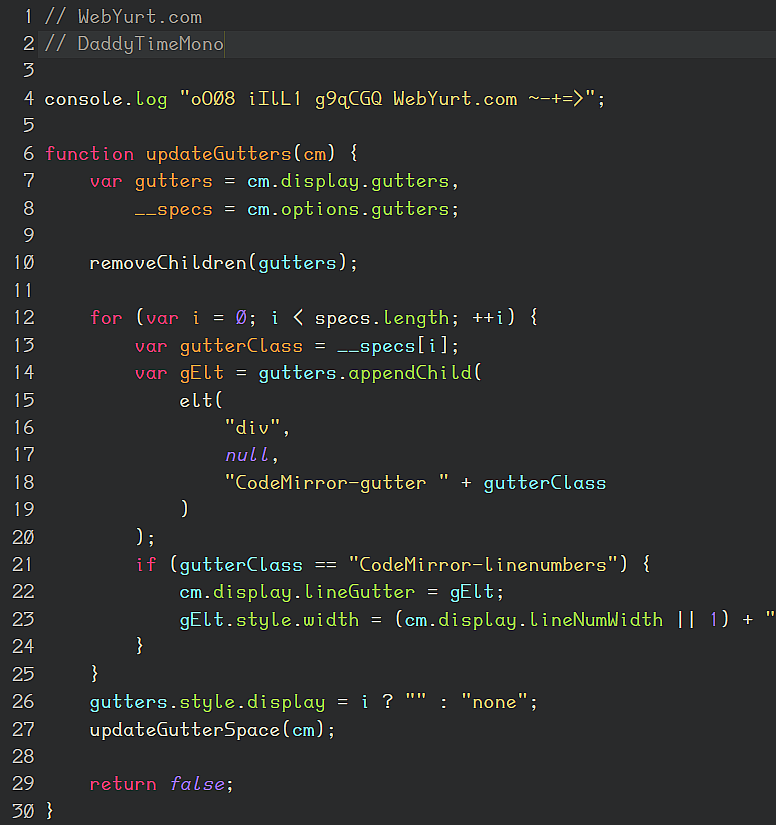
29. DejaVu Mono (Deja Vu Project, 2004)
DejaVu Mono, created by the Deja Vu Project in 2004, is a monospaced font with wide character support. It offers excellent readability and versatility for various design and text-based projects.
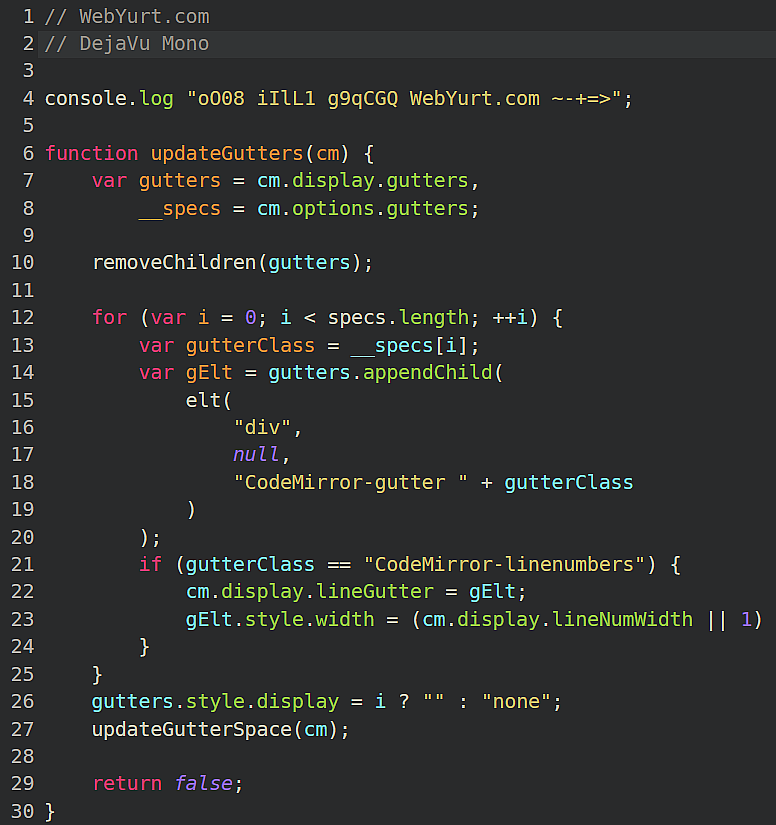
30. Dimitar Toshkov Zhekov Font (Dimitar Toshkov Zhekov, 2010)
Dimitar Toshkov Zhekov (2010) is a sans-serif monospaced font designed by Dimitar Toshkov Zhekov. It features a contemporary design suitable for coding and design projects.
31. Droid Sans (Steve Matteson, 2006)
Droid Sans, created by Steve Matteson in 2006, is a versatile sans-serif font known for its legibility. While not monospaced, it is suitable for a wide range of design and text applications.
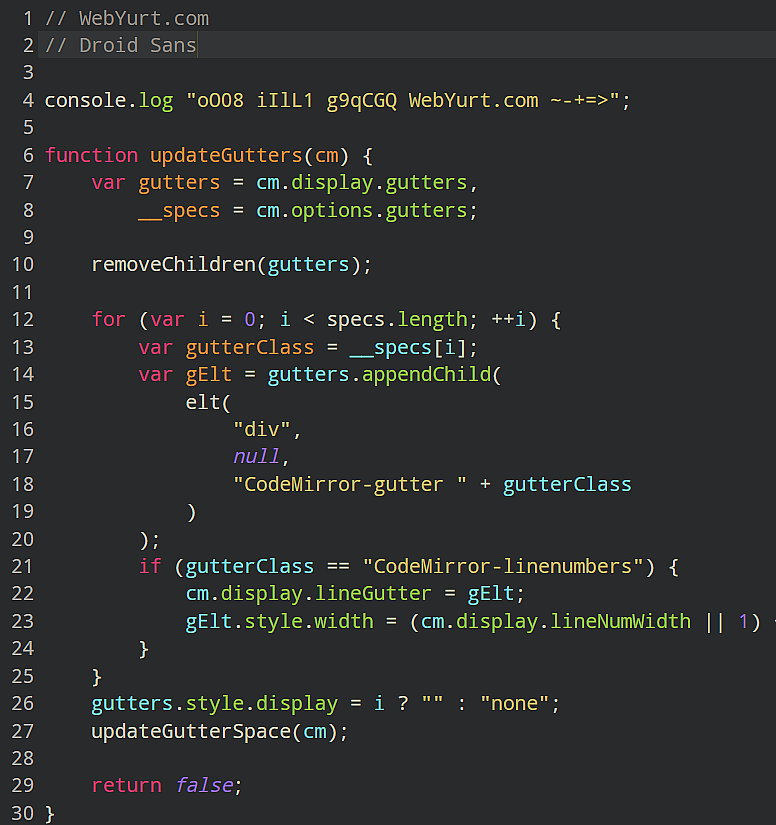
32. Edlo (Eric Hamiter, 2011)
Edlo, designed by Eric Hamiter in 2011, is a monospaced font with a unique and distinctive appearance. Its style makes it an interesting choice for creative and artistic projects.
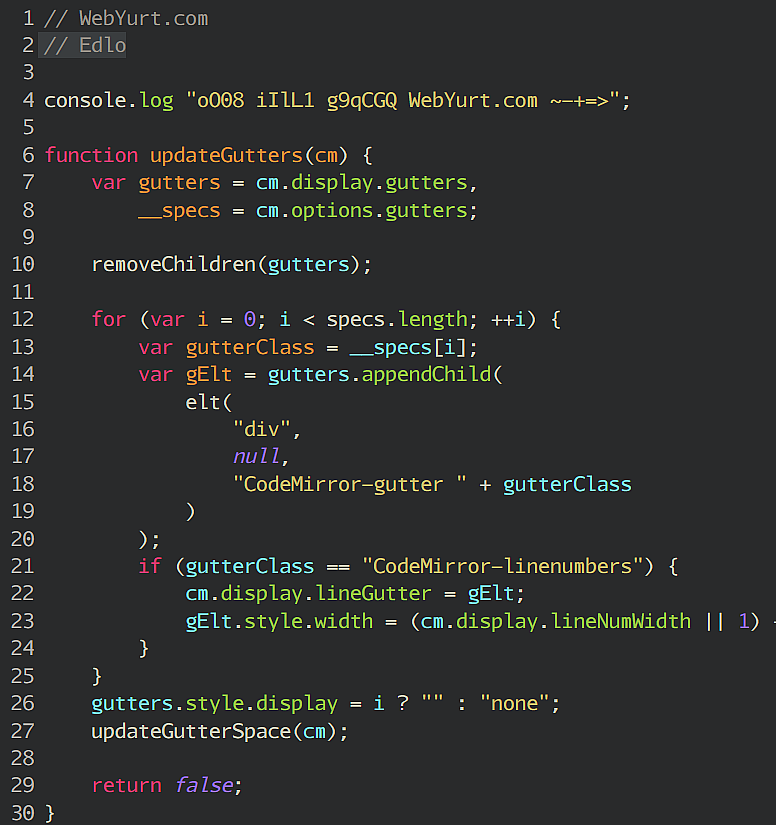
33. Effects Eighty (Peter Hull, 2013)
Effects Eighty, created by Peter Hull in 2013, is a monospaced font with a retro and nostalgic vibe. It adds a vintage touch to design and creative projects.
34. Ellograph (Connary Fagen, 2020)
Ellograph, designed by Connary Fagen in 2020, is a monospaced font with a modern and clean design. It is well-suited for coding and technical documents, ensuring readability and style.
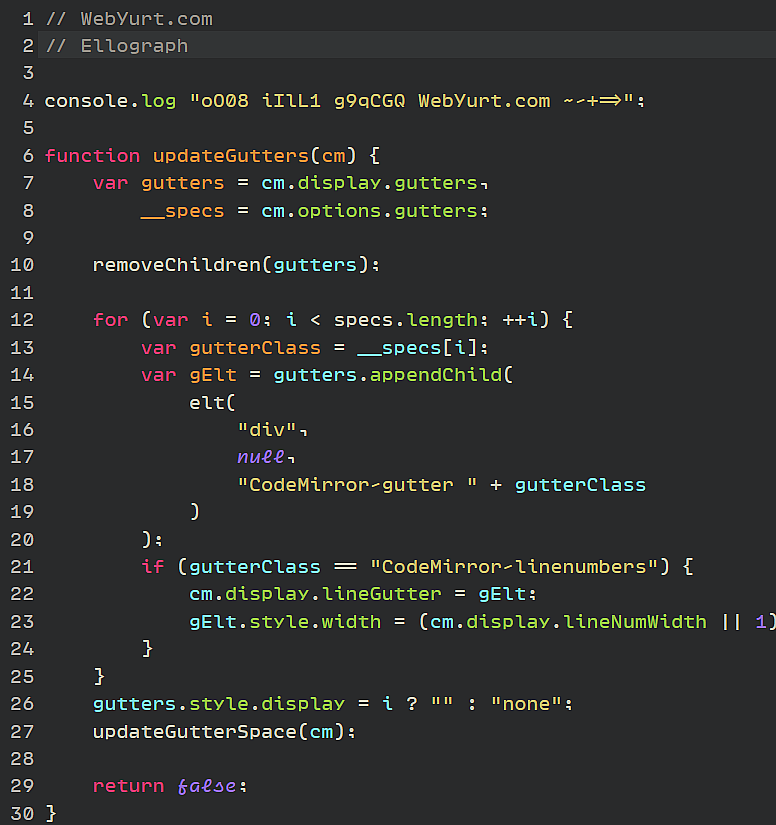
35. Envy Code R (Damien Guard, 2008)
Envy Code R, created by Damien Guard in 2008, is a monospaced font known for its crisp and sharp letterforms. It offers excellent readability and is popular among programmers and designers.
Envy Code R stands as a beloved gem in the world of programming fonts. Crafted with precision and an unwavering commitment to legibility, this monospaced font has won the hearts of many developers and coders. Its crisp and clean design makes it an ideal choice for those long coding sessions, offering exceptional clarity on every character. Envy Code R not only enhances the coding experience with its aesthetic appeal but also bolsters productivity through its carefully balanced spacing and well-defined glyphs. It's no wonder that Envy Code R has earned a special place in the toolkit of programmers who appreciate the perfect blend of form and function in their coding environment

36. Fairfax (Rebecca G. Bettencourt, 2008)
Fairfax, designed by Rebecca G. Bettencourt in 2008, is a sans-serif font with a clean and modern appearance. While not monospaced, it is suitable for various design and text-based projects.
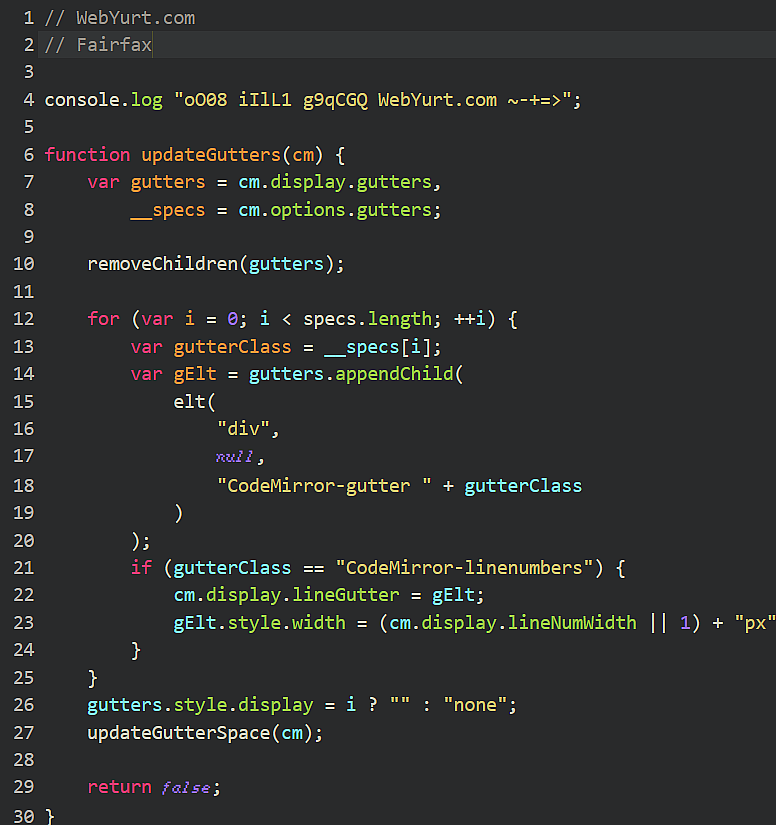
37. Fairfax HD (Rebecca G. Bettencourt, 2019)
Fairfax HD, also created by Rebecca G. Bettencourt in 2019, is a high-definition version of the Fairfax font. It offers improved clarity and is suitable for design and document applications.
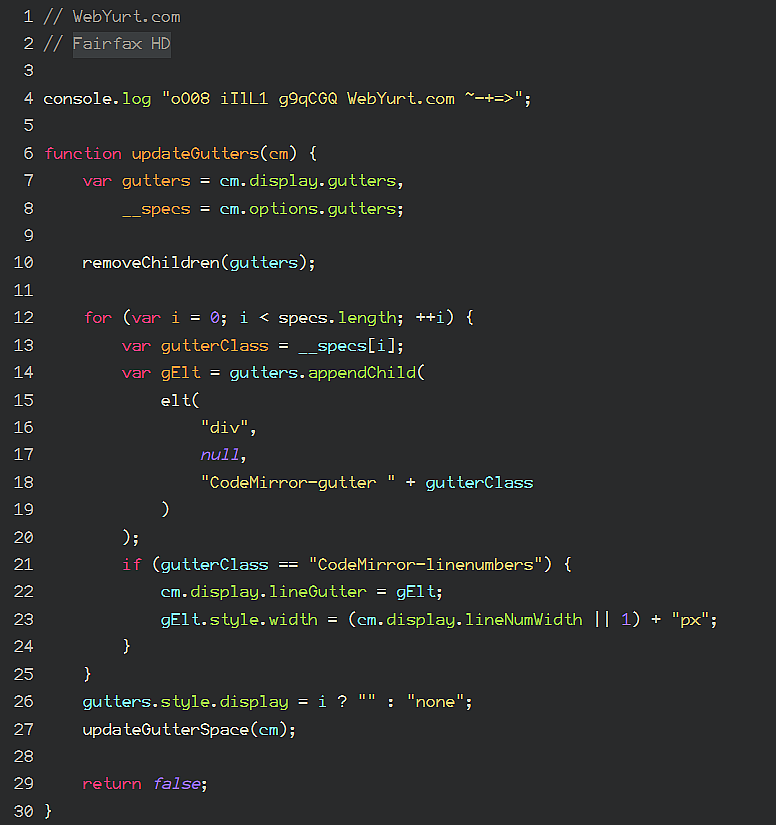
38. Fairfax Serif (Rebecca G. Bettencourt, 2008)
Fairfax Serif, designed by Rebecca G. Bettencourt in 2008, is a serif font known for its elegance. While not monospaced, it adds a touch of sophistication to text-based projects.
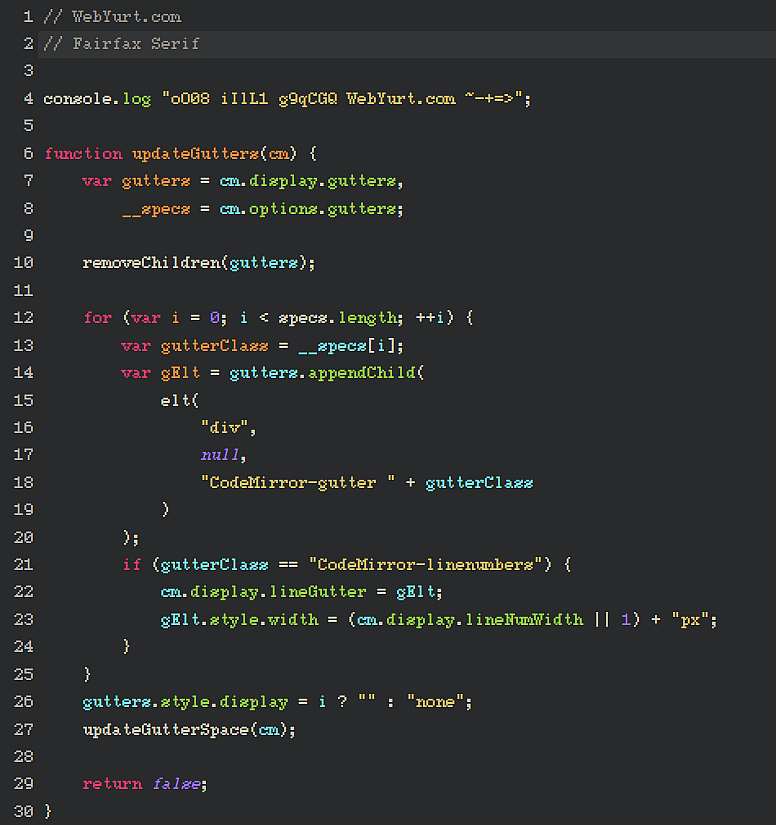
39. Fantasque Sans Mono (Jany Belluz, 2013)
Fantasque Sans Mono, created by Jany Belluz in 2013, is a monospaced font with a playful and distinctive style. It is a unique choice for creative and design-oriented projects.
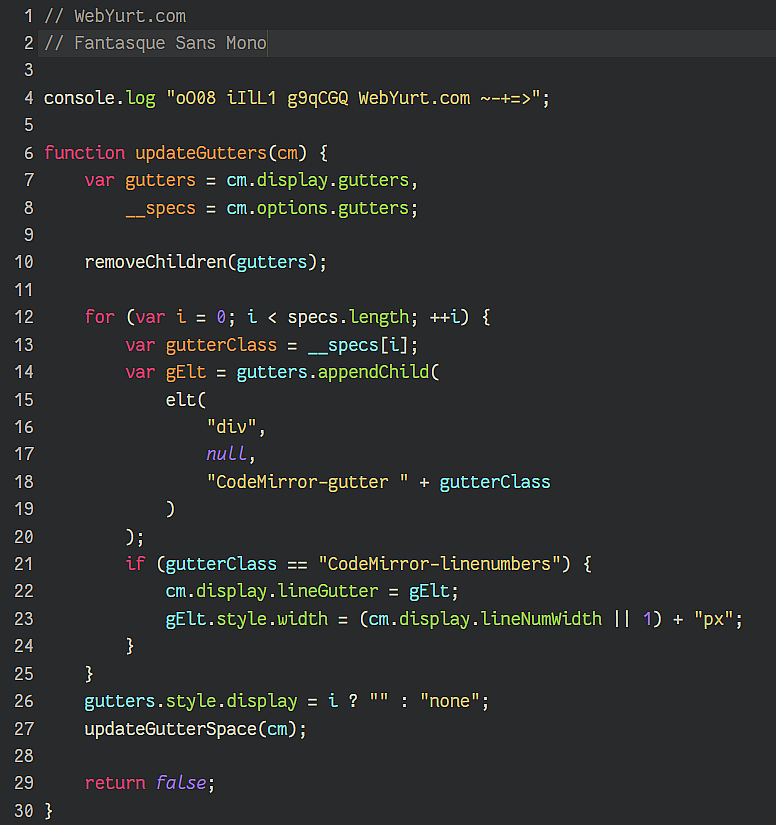
40. Fifteen (James Kilfiger, 2013)
Fifteen, designed by James Kilfiger in 2013, is a monospaced font known for its clarity and simplicity. It offers readability and is suitable for coding and technical documents.
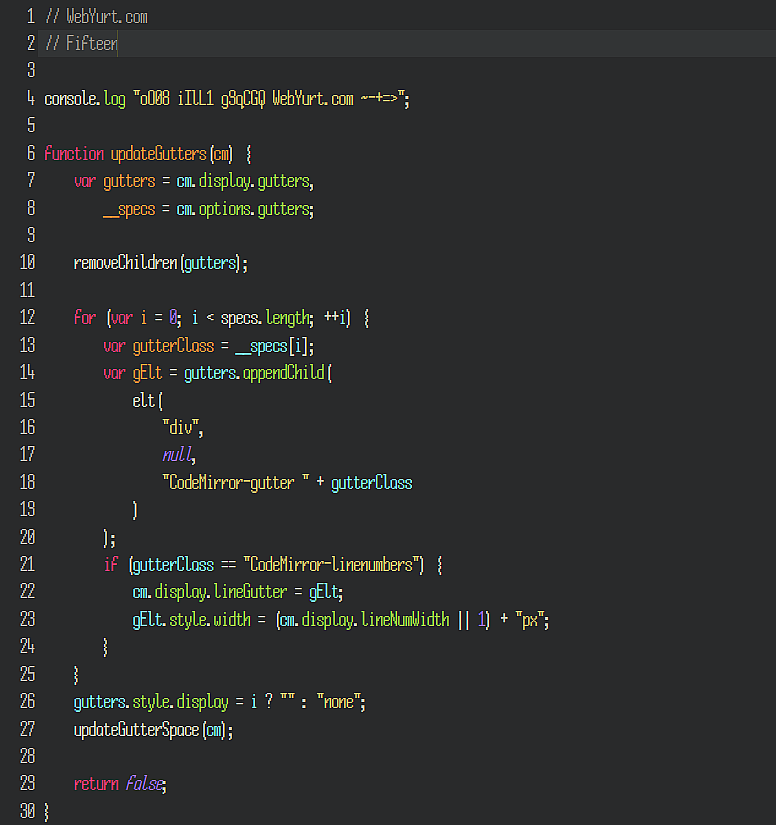
41. Fira Code (Nikita Prokopov, 2014)
Fira Code, created by Nikita Prokopov in 2014, is a monospaced font designed with a focus on enhancing coding and programming. It includes ligatures that improve the visual representation of code, making it a popular choice among developers.
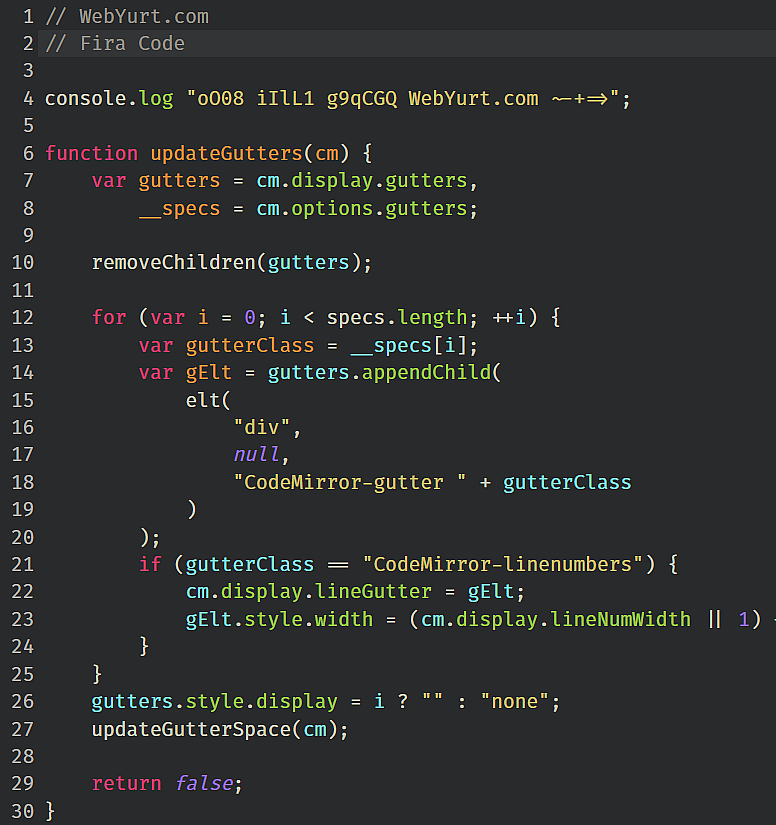
42. Fira Mono (Erik Spiekermann, 2013)
Fira Mono, designed by Erik Spiekermann in 2013, is a monospaced font known for its clean and modern design. It offers excellent readability and is suitable for coding, technical documents, and text-based projects.
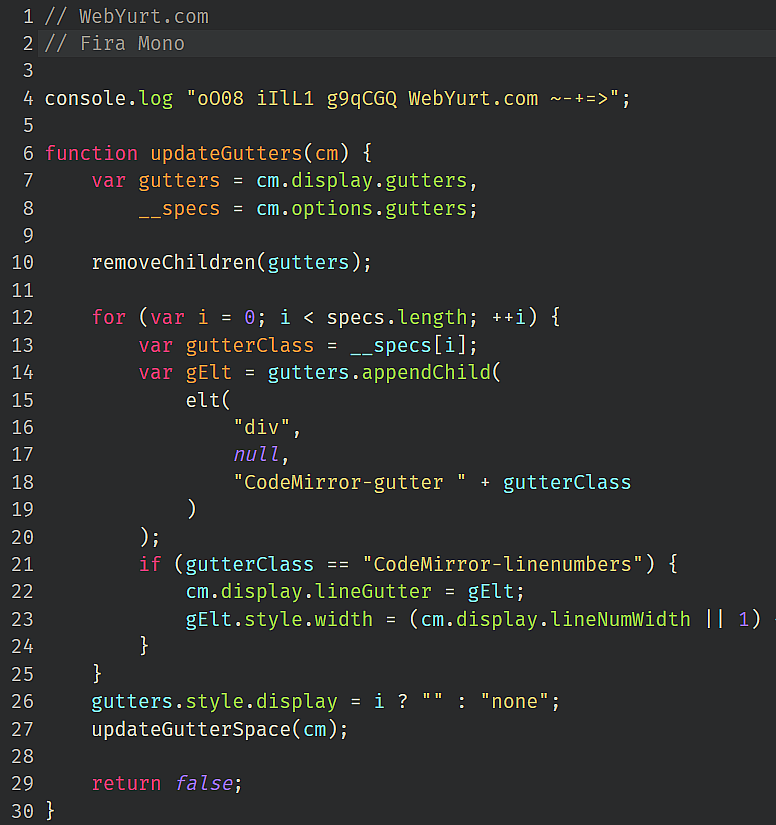
43. Fixedsys (Microsoft, 1980)
Fixedsys is a classic monospaced font created by Microsoft in 1980. It has a long history of use in terminal applications and provides a simple and utilitarian appearance.

44. Fixedsys with Ligatures (Kirill Pertsev, 2016)
Fixedsys with Ligatures, designed by Kirill Pertsev in 2016, is an extension of the classic Fixedsys font. It includes ligatures that enhance its aesthetics and readability, making it suitable for coding and design projects.

45. GNU Freefont (Primož Peterlin, Steve White, 2002)
GNU Freefont, collaboratively created by Primož Peterlin and Steve White in 2002, is a versatile font family with various styles. It is freely available and serves well in a wide range of text and design applications.
46. GNU Unifont (Roman Czyborra, 1998)
GNU Unifont, designed by Roman Czyborra in 1998, is a monospaced font known for its extensive character support. It includes a wide range of Unicode characters and is suitable for multilingual and technical use.
47. Generic Mono (Luc Devroye, 1980)
Generic Mono, designed by Luc Devroye in 1980, is a monospaced font that provides a basic and straightforward appearance. It is suitable for coding and text-based projects where simplicity is desired.

48. Go Mono (Bigelow & Holmes, 2016)
Go Mono, created by Bigelow & Holmes in 2016, is a monospaced font with a clean and modern design. It offers readability and style, making it suitable for coding and design work.

49. Hack (Christopher Simpkins, 2015)
Hack, designed by Christopher Simpkins in 2015, is a monospaced font specifically created for programming and coding. It is known for its excellent legibility and is a popular choice among developers.
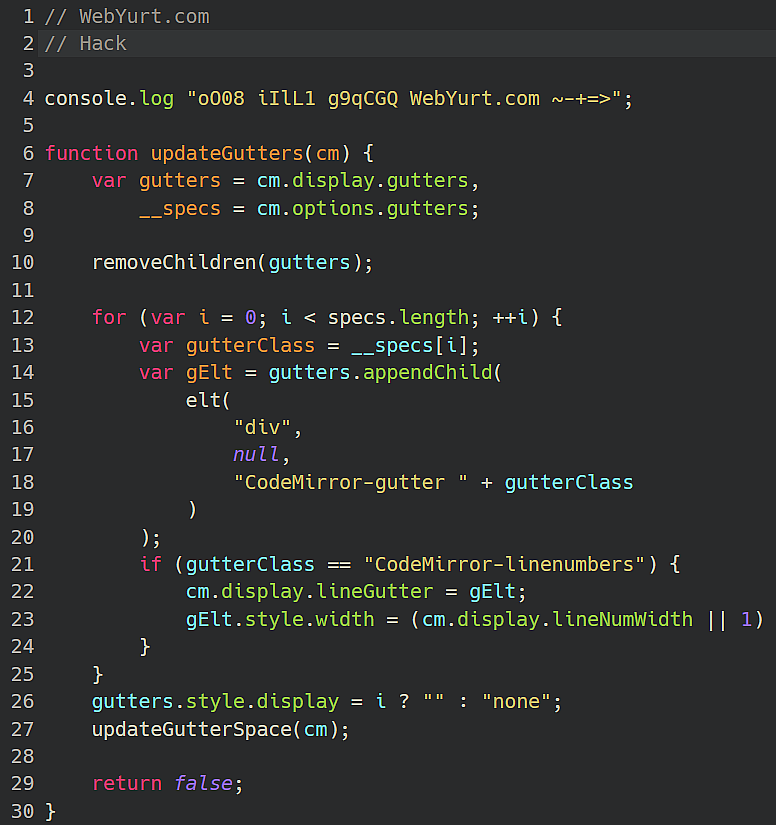
50. Hasklig (Ian Tuomi, 2014)
Hasklig, created by Ian Tuomi in 2014, is a monospaced font that enhances the coding experience by including ligatures. It is particularly well-suited for coding in Haskell, providing improved visual clarity for code.
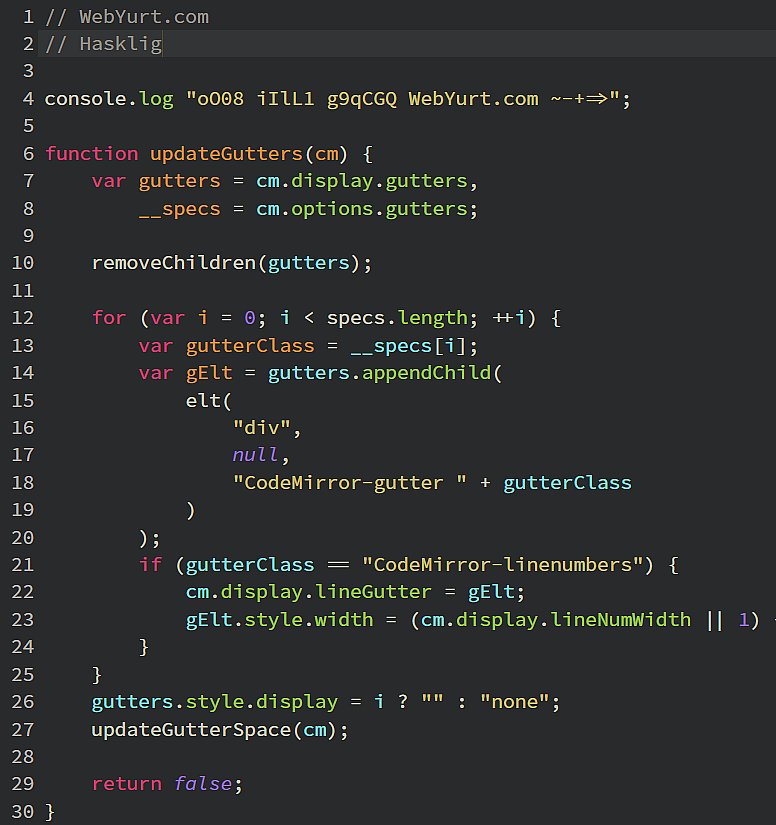
51. Hermit (Pablo Caro, 2013)
Hermit, designed by Pablo Caro in 2013, is a monospaced font known for its simplicity and readability. It offers a clean and straightforward appearance, making it suitable for coding and technical documents.
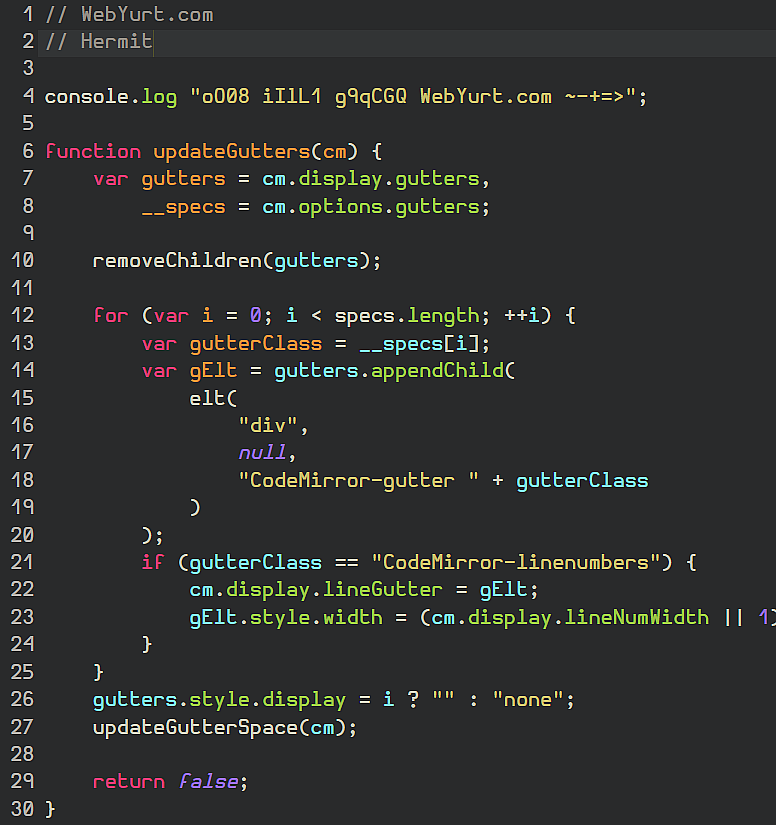
52. Inconsolata (Raph Levien, 2001)
Inconsolata, created by Raph Levien in 2001, is a monospaced font that has become popular among developers and programmers. Its elegant and well-balanced design enhances code readability.
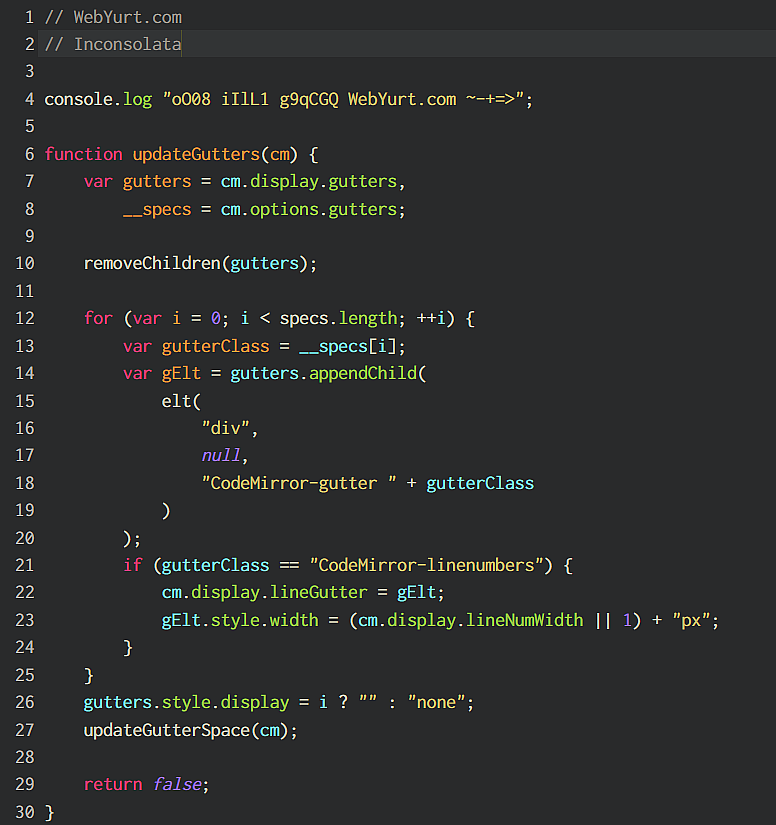
53. Inconsolata-g (Leonardo Maffi, 2009)
Inconsolata-g, designed by Leonardo Maffi in 2009, is an extension of the Inconsolata font. It includes additional characters and is optimized for code readability, making it a valuable choice for developers.
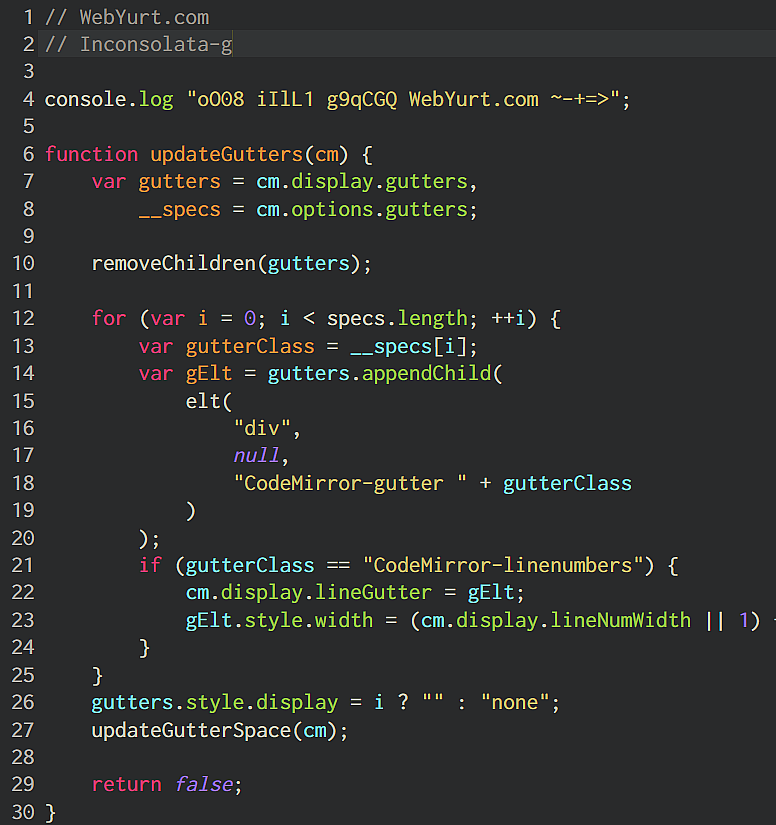
54. Input (David Jonathan Ross, 2014)
Input, created by David Jonathan Ross in 2014, is a monospaced font designed with a focus on customization. Users can choose from various styles and weights to tailor the font to their specific needs, making it versatile for different applications.
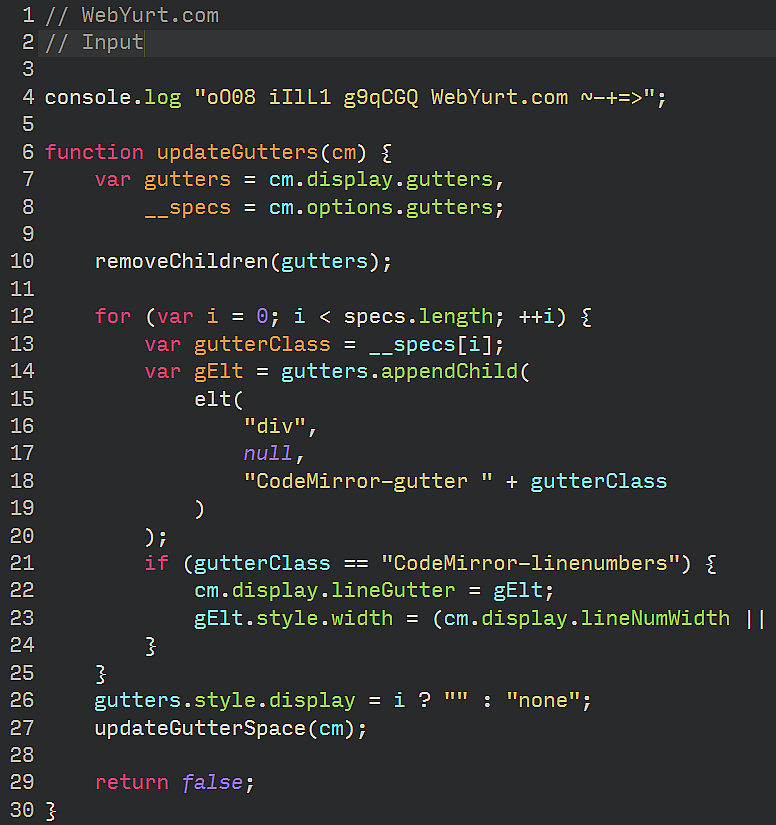
55. Iosevka (Belleve Invis, 2015)
Iosevka, designed by Belleve Invis in 2015, is a monospaced font known for its versatility and customization options. It is highly configurable, allowing users to fine-tune its appearance to match their coding preferences.
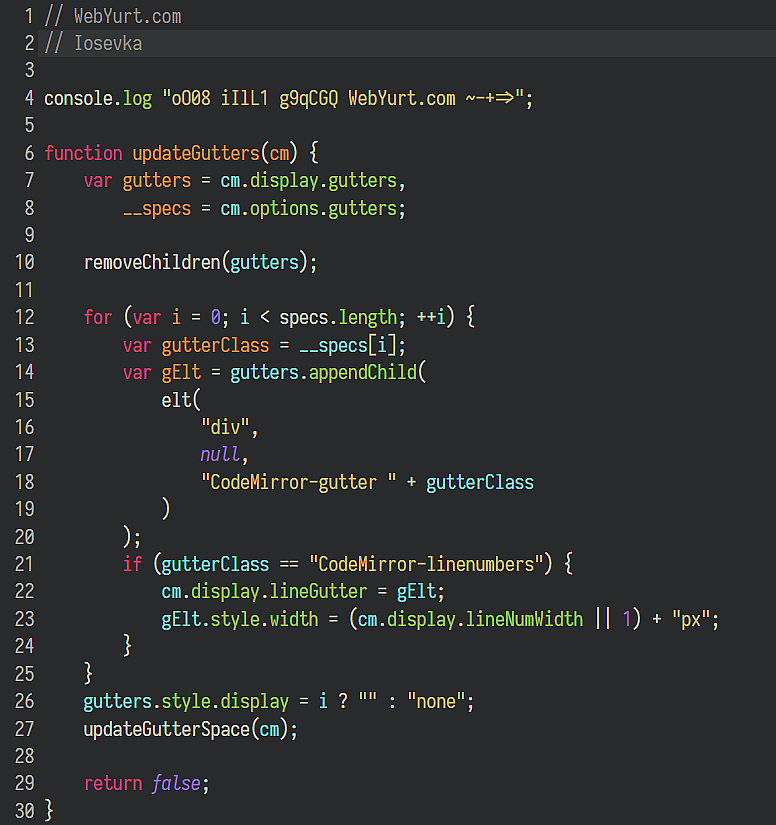
56. JetBrains Mono (Philipp Nurullin, 2020)
JetBrains Mono, created by Philipp Nurullin in 2020, is a monospaced font specifically designed for developers by the JetBrains team. It focuses on code readability and offers ligatures for improved aesthetics and clarity.
57. Latin Modern Mono (Donald E. Knuth, 2002)
Latin Modern Mono, designed by Donald E. Knuth in 2002, is a monospaced font known for its classic and timeless appearance. It is based on the Computer Modern font family and is suitable for various text and coding applications.
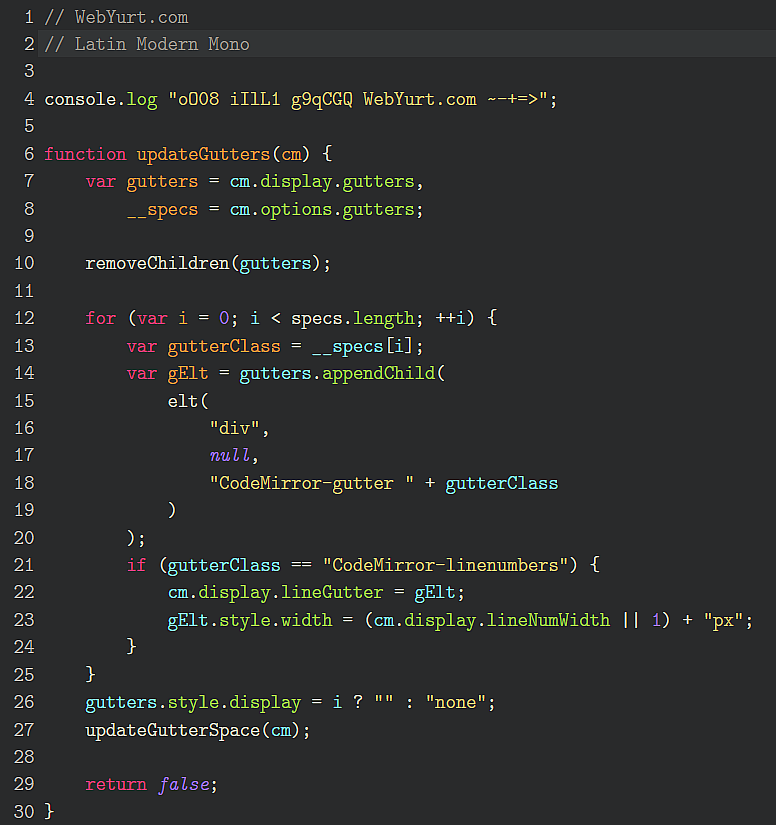
58. League Mono (Tyler Fink, 2017)
League Mono, created by Tyler Fink in 2017, is a monospaced font with a clean and modern design. It offers readability and style, making it suitable for coding and design work.
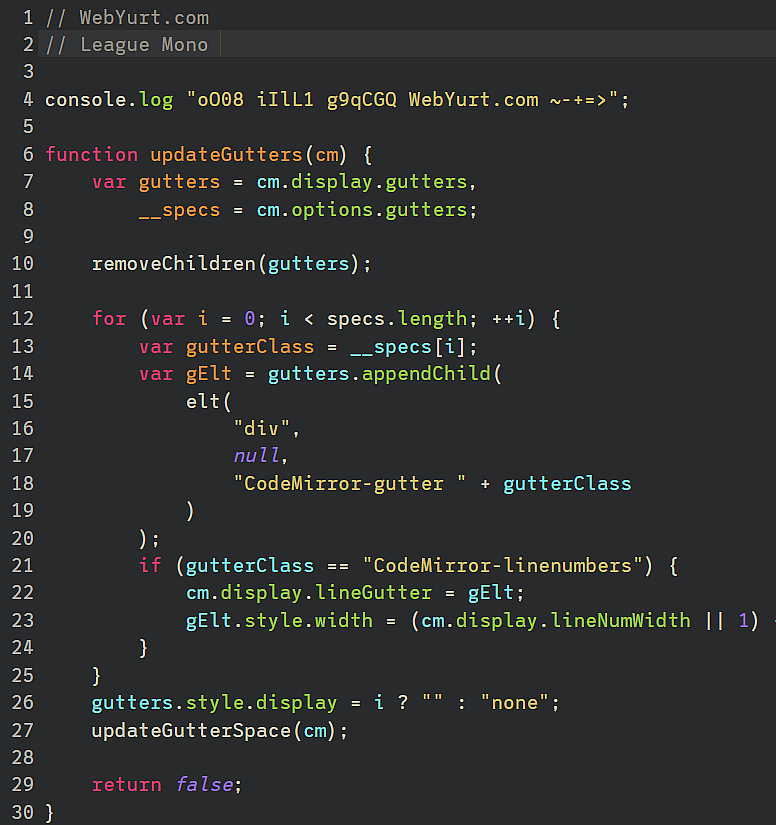
59. Lekton (Accademia di Belle Arti di Urbino, 2008)
Lekton, designed by the Accademia di Belle Arti di Urbino in 2008, is a monospaced font known for its clarity and simplicity. It provides a straightforward appearance ideal for coding and technical documents.
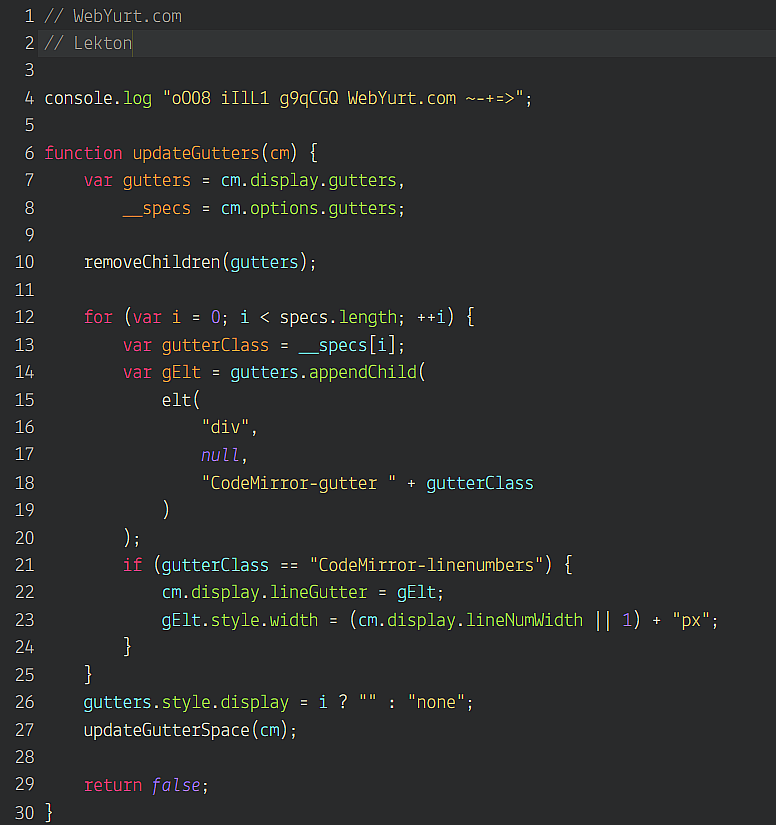
60. Liberation Mono (Steve Matteson, 2007)
Liberation Mono, created by Steve Matteson in 2007, is a monospaced font that aims to provide a free and open-source alternative to classic fonts like Courier. It offers readability and versatility for coding and text-based projects.
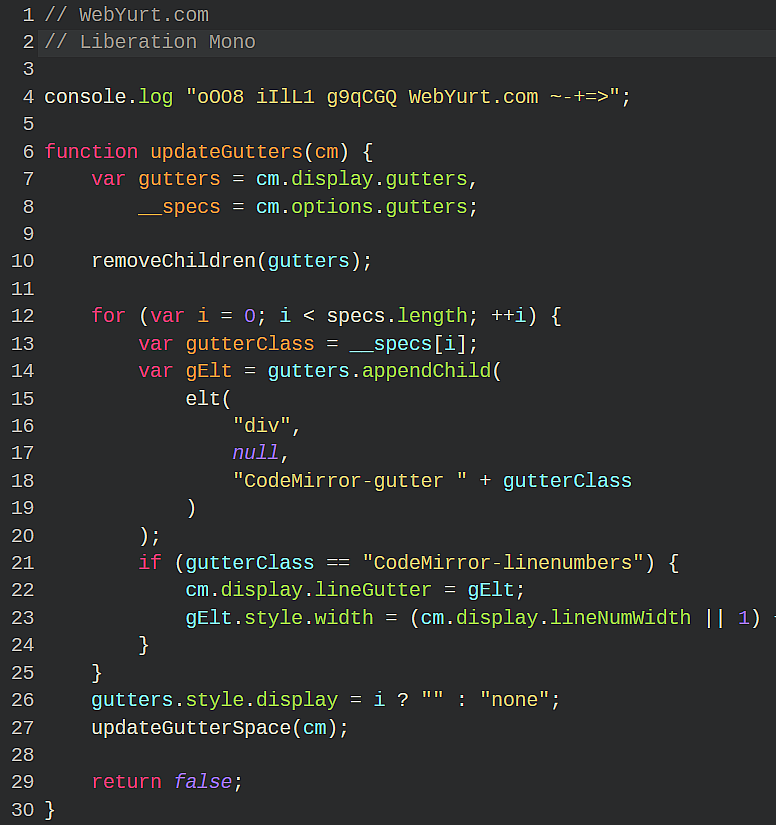
61. Luculent (Andrew Kensler, 2008)
Luculent, designed by Andrew Kensler in 2008, is a monospaced font known for its clarity and readability. It offers a straightforward and clean appearance, making it suitable for coding and technical documents.
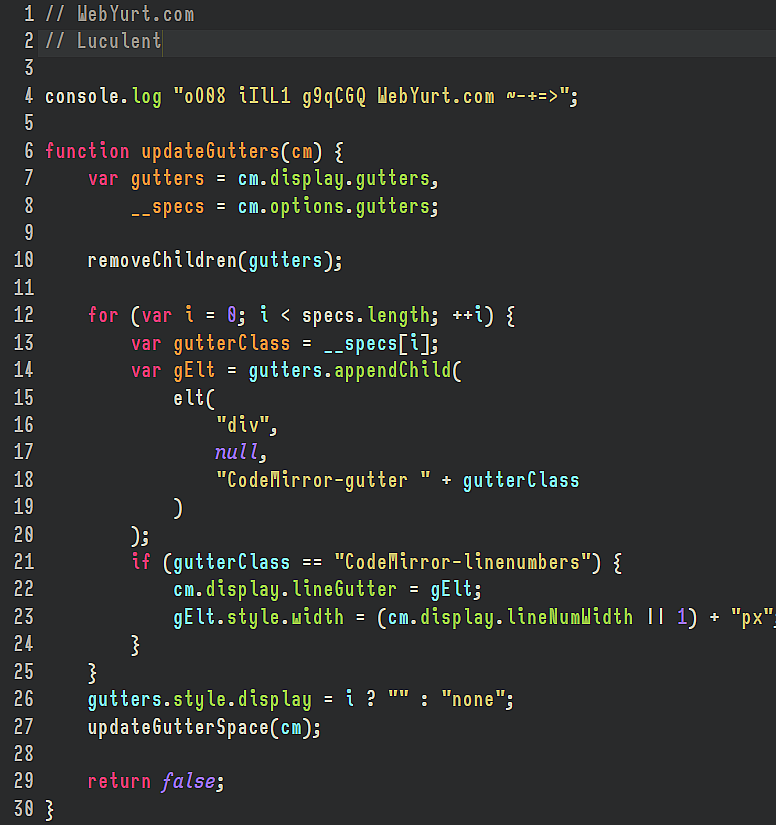
62. Luxi Mono (Kris Holmes, Charles Bigelow, 2001)
Luxi Mono, created by Kris Holmes and Charles Bigelow in 2001, is a monospaced font known for its versatility. It provides readability and is suitable for coding, technical documents, and more.
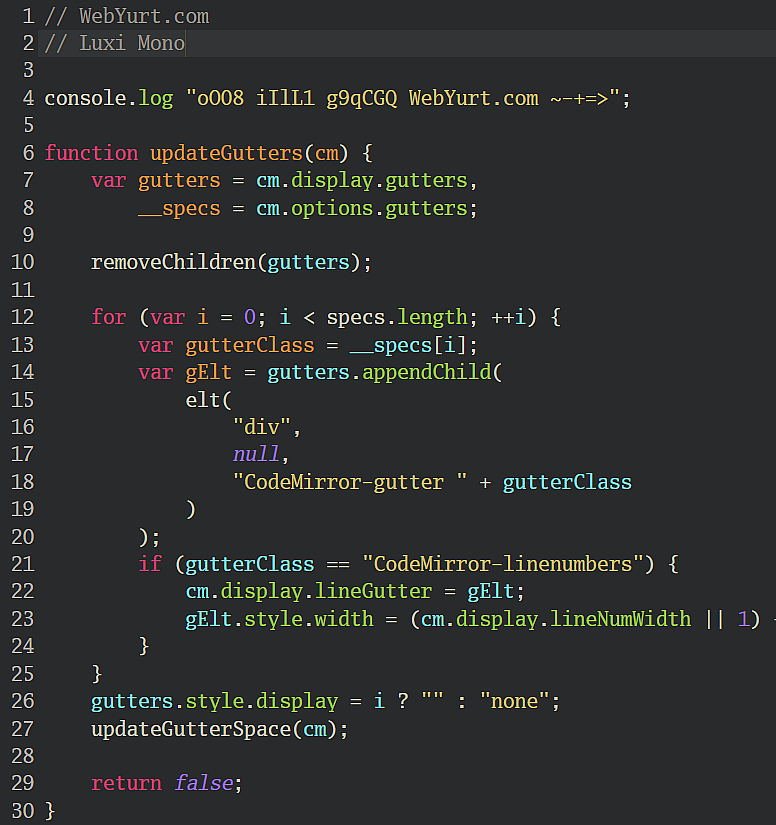
63. M+ 1c (Coji Morishita, 2011)
M+ 1c, designed by Coji Morishita in 2011, is part of the M+ font family. It offers a monospaced style suitable for coding and programming, ensuring clear and readable text.
64. M+ 1m (Coji Morishita, 2011)
M+ 1m, also created by Coji Morishita in 2011, is another monospaced font in the M+ family. It provides a balanced and clean appearance, making it a dependable choice for coding and technical documents.
65. M+ 2c (Coji Morishita, 2011)
M+ 2c, designed by Coji Morishita in 2011, is part of the M+ font family and offers a monospaced style. It focuses on readability and clarity, making it suitable for coding tasks.
66. M+ 2m (Coji Morishita, 2011)
M+ 2m, also created by Coji Morishita in 2011, is another monospaced font in the M+ family. It provides a clean and modern appearance, ensuring that code is easy to read and work with.
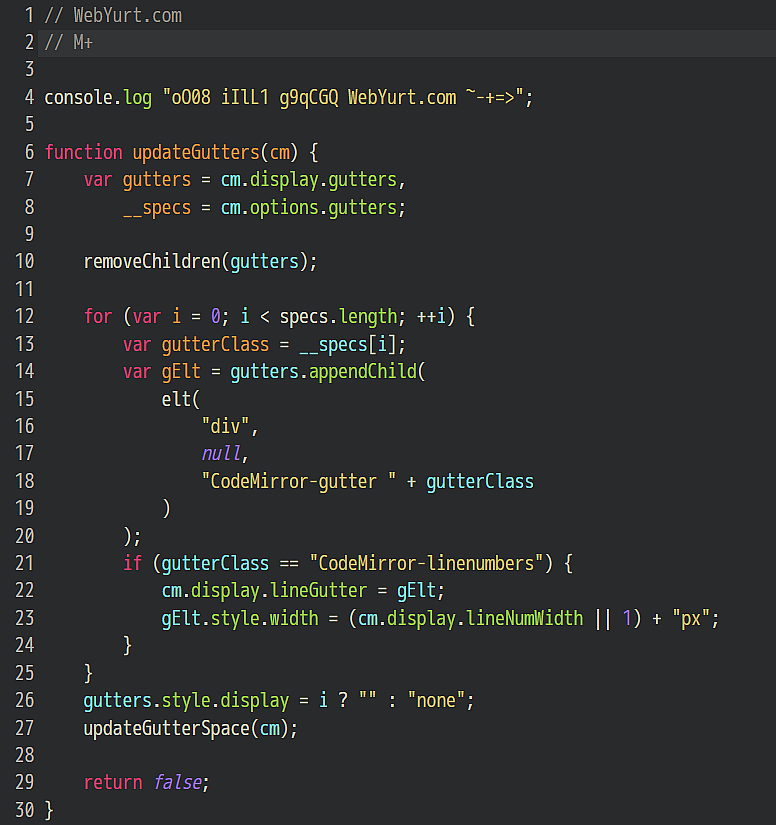
67. Menlo (Jim Lyles, 2009)
Menlo, designed by Jim Lyles in 2009, is a monospaced font specifically developed for Apple's macOS. It is known for its crisp and clear letterforms, making it a popular choice among Mac users for coding and design.
68. Mensch Font (Unknown)
Mensch Font is a monospaced typeface, but the creator is unknown. It is known for its straightforward design, offering readability and clarity for coding and programming.
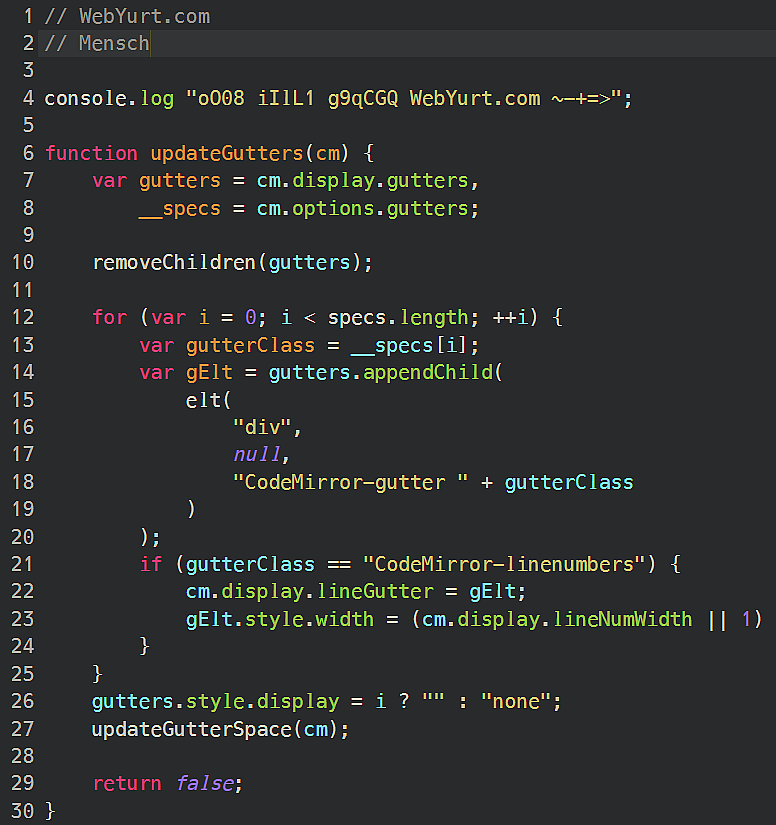
69. Meslo LG (Andreas Larsen, 2013)
Meslo LG, created by Andreas Larsen in 2013, is a monospaced font designed for coding and programming. It is known for its clarity and legibility, making it a practical choice for developers.
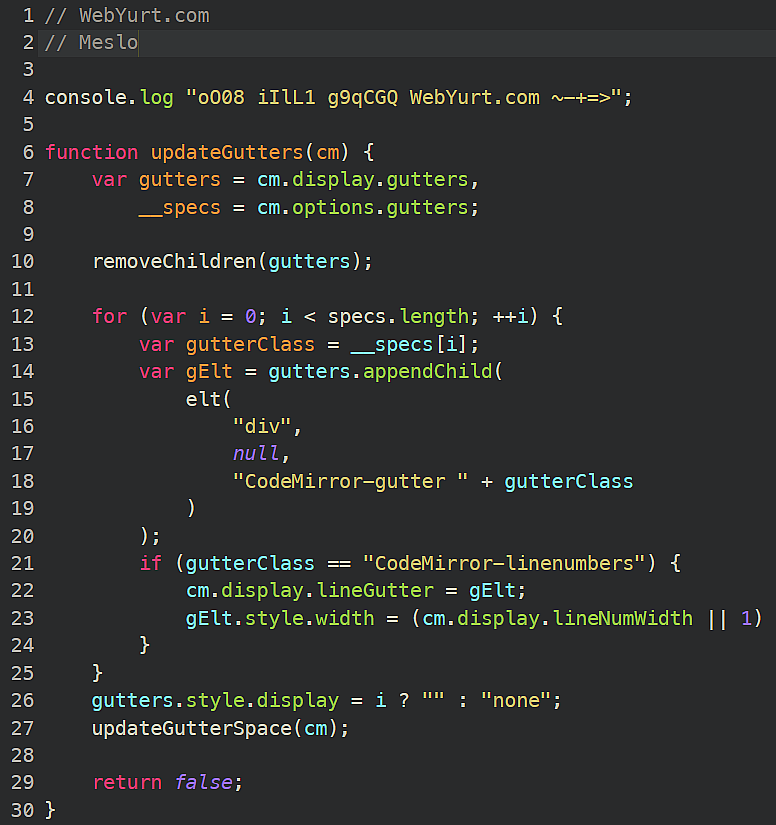
70. Mona (Mark Proudfoot, 1995)
Mona, designed by Mark Proudfoot in 1995, is a monospaced font known for its simplicity and readability. It has a clean and straightforward appearance, making it suitable for coding and technical documents.
71. Monaco (Susan Kare, 2006)
Monaco, designed by Susan Kare in 2006, is a monospaced font known for its clarity and clean design. It is particularly associated with Apple's macOS and is a popular choice for coding and design work.
72. Monofur (Viktoriya Grabowska, 2006)
Monofur, created by Viktoriya Grabowska in 2006, is a monospaced font that stands out with its distinctive and playful style. It adds a unique touch to creative projects and coding.
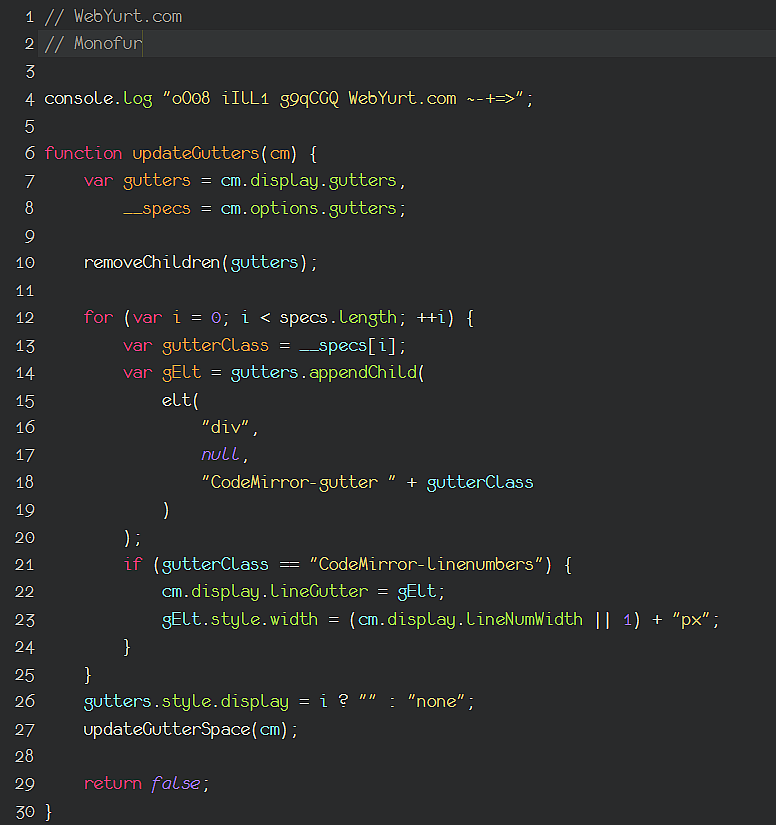
73. Monoid (Lars Hartmann, 2016)
Monoid, designed by Lars Hartmann in 2016, is a monospaced font known for its simple and modern appearance. It offers clear letterforms and is suitable for coding and technical documents.
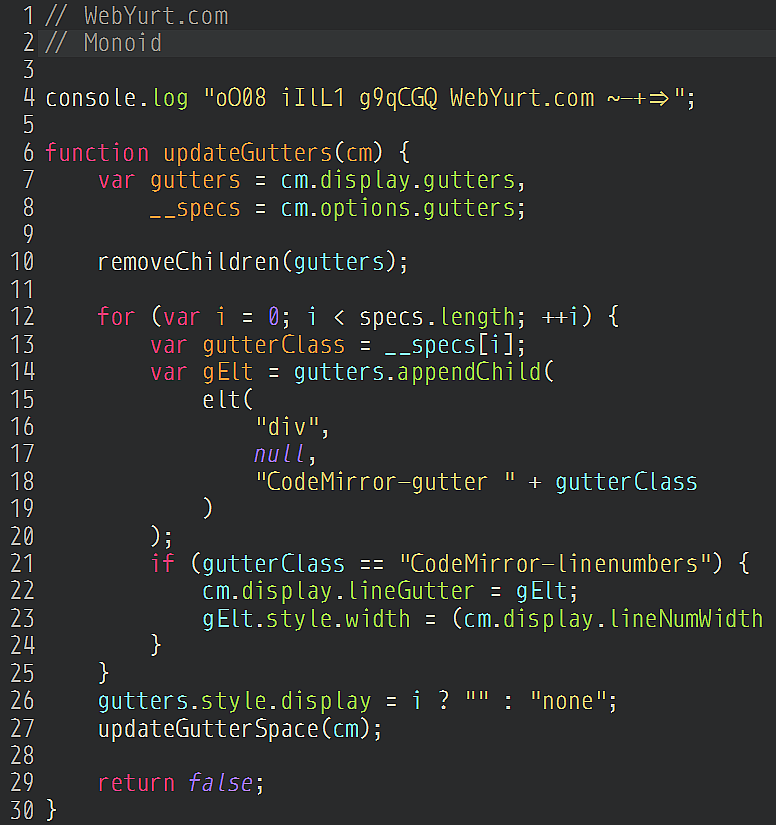
74. Mononoki (Matheus Barbosa, 2019)
Mononoki, created by Matheus Barbosa in 2019, is a monospaced font known for its clean and minimalistic design. It is optimized for coding and programming tasks, ensuring code readability.
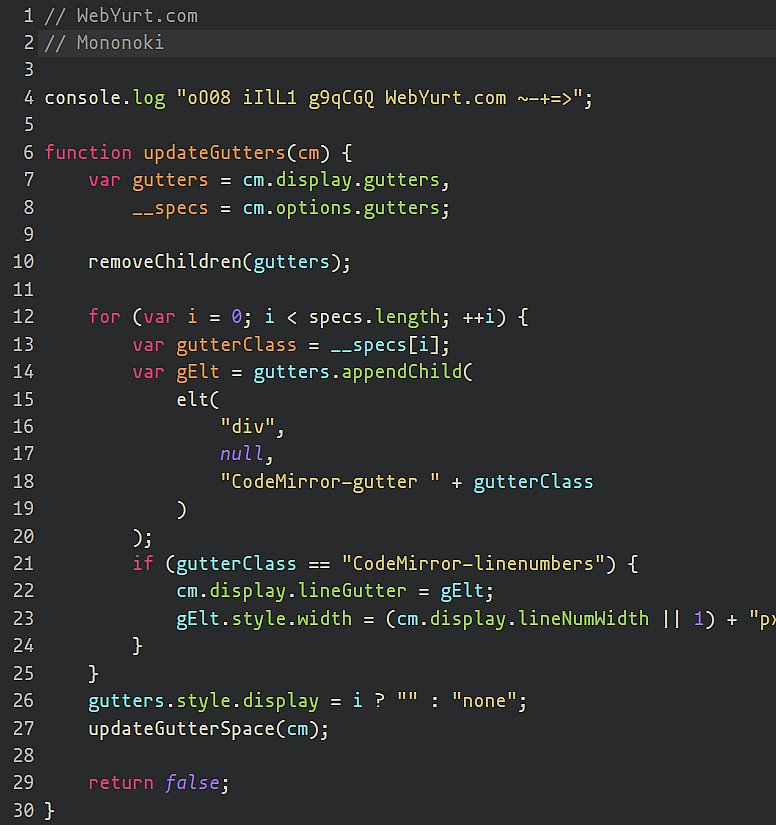
75. MonospaceTypewriter (Morgan Allan Knutson, 2012)
MonospaceTypewriter, designed by Morgan Allan Knutson in 2012, is a monospaced font with a retro and typewriter-inspired appearance. It adds a nostalgic touch to design and creative projects.
76. Monoxil (Curtis Wilcox, 2005)
Monoxil, created by Curtis Wilcox in 2005, is a monospaced font with a clean and straightforward design. It offers readability and is suitable for coding and technical documents.
77. Nanum Gothic Coding Font (Sandoll Communications Inc., 2007)
Nanum Gothic Coding Font, developed by Sandoll Communications Inc. in 2007, is a monospaced font tailored for coding. It provides a clean and modern appearance for clear code representation.

78. NotCourierSans Font (OSP Foundry)
NotCourierSans Font, designed by OSP Foundry, is a derivative of the classic Courier font. It offers a unique and modern take on the monospaced style, suitable for coding and design projects.
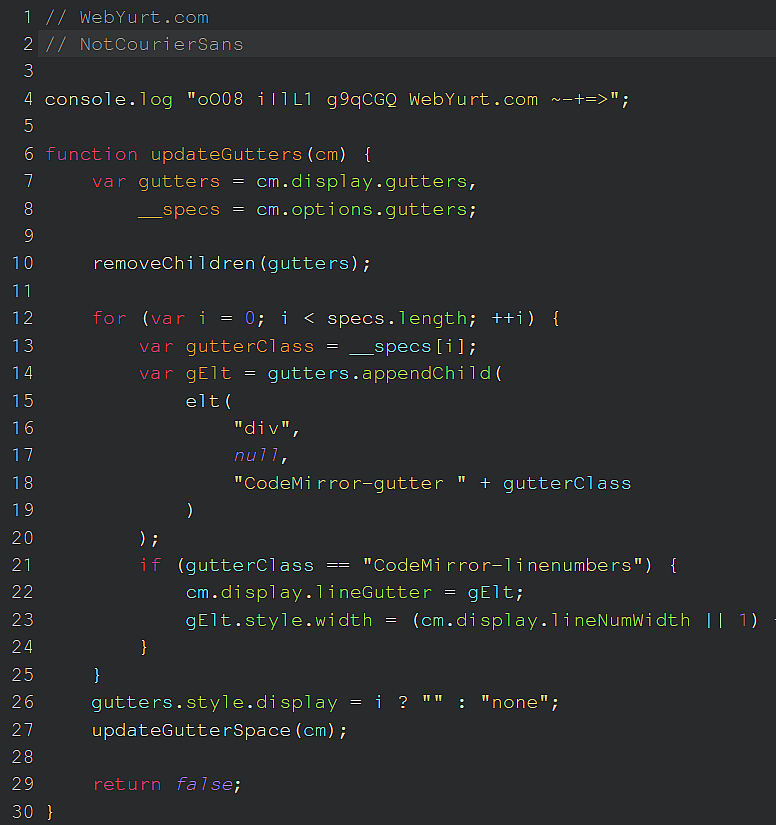
79. Noto Mono (Google, 2012)
Noto Mono, created by Google in 2012, is part of the Noto font family, known for its extensive character support. It provides a monospaced style that ensures clarity and readability for coding and text.
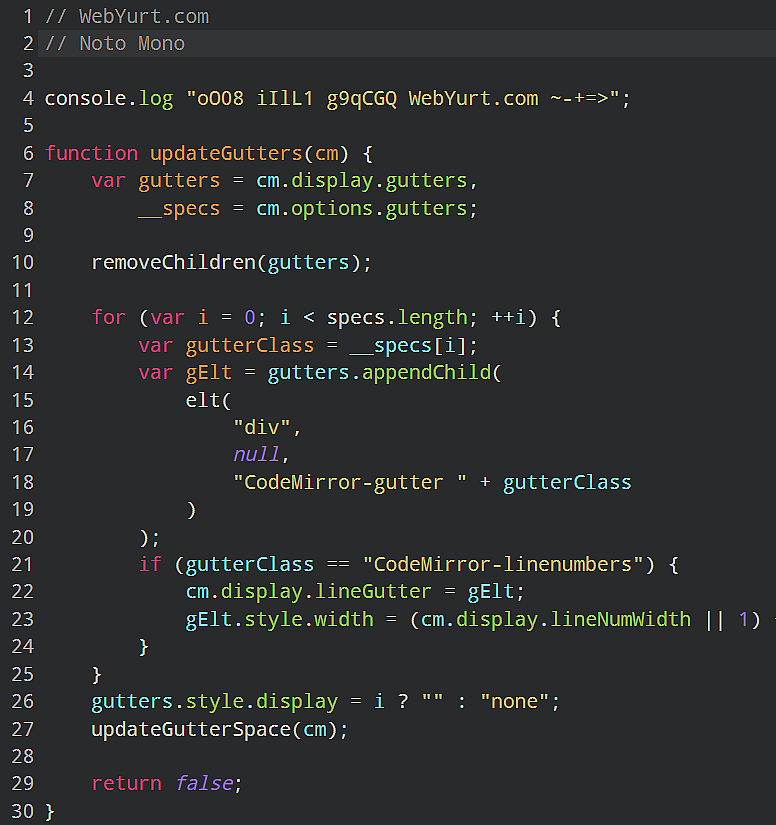
80. Nova Mono (Jovanny Lemonad, 2019)
Nova Mono, designed by Jovanny Lemonad in 2019, is a monospaced font with a clean and modern appearance. It offers readability and style, making it suitable for coding and design work.
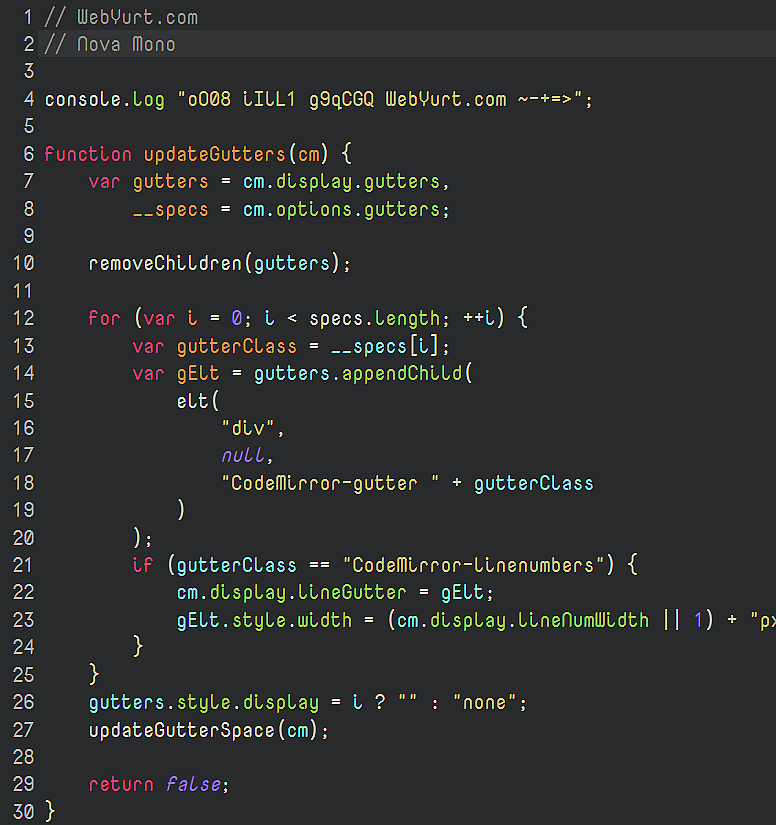
81. NovaMono (Jovanny Lemonad, 2019)
NovaMono, designed by Jovanny Lemonad in 2019, is a monospaced font with a clean and modern appearance. It offers readability and style, making it suitable for coding and design work.
82. OCR-A (American National Standards Institute, 1966)
OCR-A is a classic monospaced font created by the American National Standards Institute (ANSI) in 1966. It was originally designed for optical character recognition and is recognized for its distinct, machine-readable appearance.
83. Office Code Pro (Ivan Sagalaev, 2014)
Office Code Pro, created by Ivan Sagalaev in 2014, is a monospaced font designed for coding and programming. It is known for its clarity and readability, making it a practical choice for developers.

84. OpenDyslexic Mono Font (Abelardo Gonzalez, 2011)
OpenDyslexic Mono Font, designed by Abelardo Gonzalez in 2011, is a monospaced font specifically created to aid individuals with dyslexia. It features unique letterforms to enhance readability for those with reading difficulties.
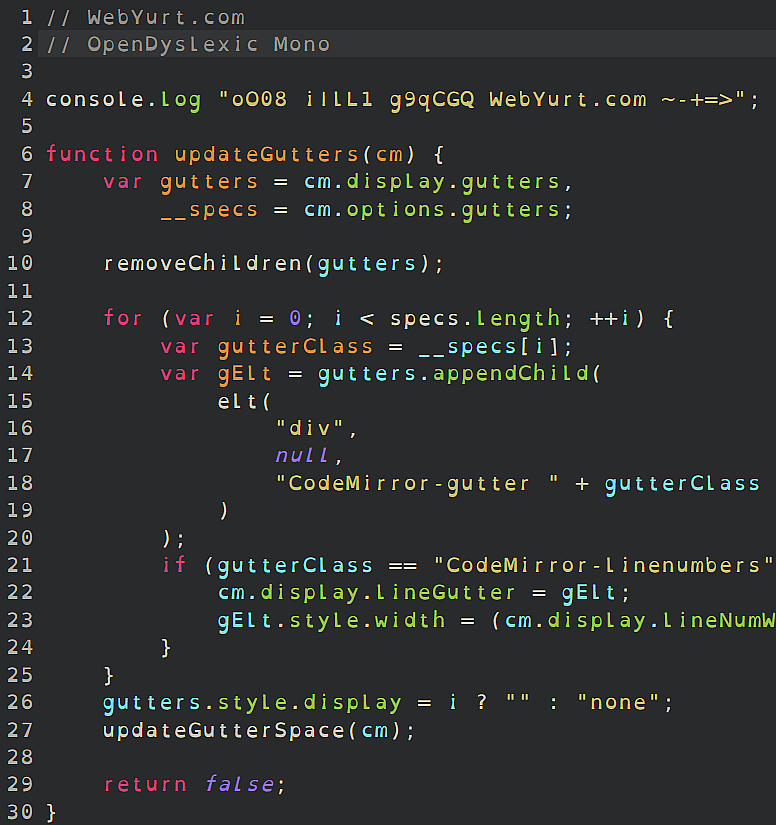
85. Overpass Mono (Red Hat, 2016)
Overpass Mono, developed by Red Hat in 2016, is a monospaced font known for its modern and geometric design. It offers a clean and stylish appearance, suitable for coding and design projects.

86. Oxygen Mono Font (Vernon Adams, 2012)
Oxygen Mono Font, created by Vernon Adams in 2012, is a monospaced font with a contemporary and readable design. It is optimized for coding and programming tasks, ensuring clear code representation.

87. PT Mono Font (ParaType, 2009)
PT Mono Font, designed by ParaType in 2009, is a monospaced font known for its simplicity and readability. It offers a clean and straightforward appearance, making it suitable for coding and technical documents.
88. Phalanx (Donald E. Knuth, 2012)
Phalanx, created by Donald E. Knuth in 2012, is a monospaced font known for its classic and timeless appearance. It is suitable for various text and coding applications.
89. Pixel LCD7 (Style-7, 2006)
Pixel LCD7, developed by Style-7 in 2006, is a monospaced font designed to mimic the appearance of pixelated LCDs. It adds a unique and retro touch to design and creative projects.
90. Plex Mono Font (IBM, Google, 2017)
Plex Mono Font, jointly developed by IBM and Google in 2017, is a monospaced font known for its versatility and extensive character support. It is suitable for coding, technical documents, and text-based projects.
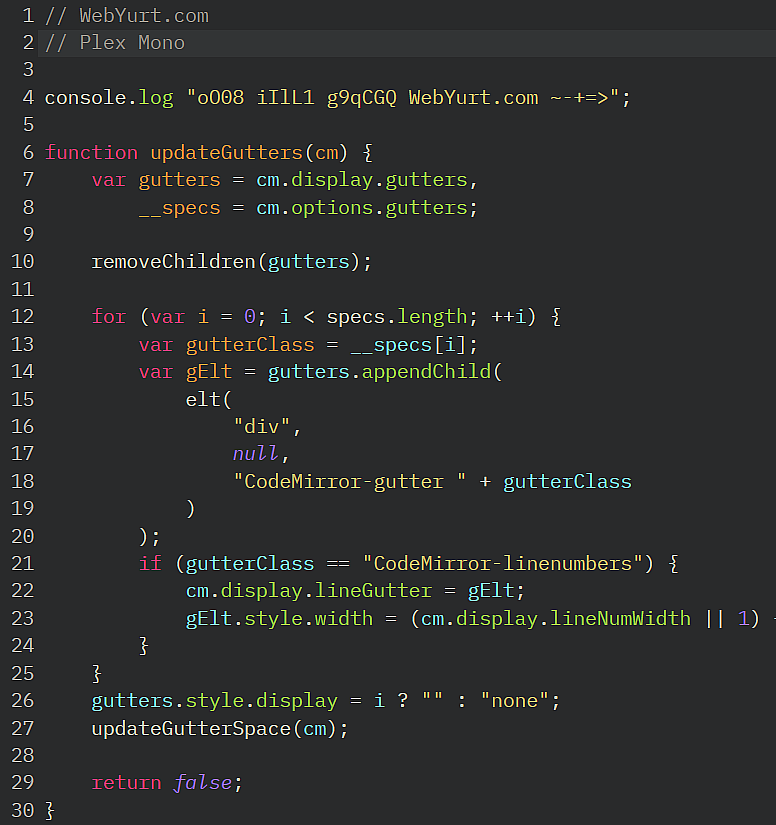
91. PowerlineSymbols (Lokaltog, 2012)
PowerlineSymbols, created by Lokaltog in 2012, is a symbol font specifically designed for use with status line plugins in terminal applications. It includes various symbols and icons for enhancing the terminal interface.
92. Press Start 2P (codeman38, 2012)
Press Start 2P, designed by codeman38 in 2012, is a monospaced font with a pixel art style reminiscent of classic video game text. It adds a nostalgic touch to design and creative projects.
93. Pretzel Mono (Brian S. Cody, 2018)
Pretzel Mono, created by Brian S. Cody in 2018, is a monospaced font known for its simplicity and readability. It offers a clean and straightforward appearance, making it suitable for coding and technical documents.
94. ProFont (Tobias Jung, 2003)
ProFont, designed by Tobias Jung in 2003, is a monospaced font known for its clean and minimalistic design. It offers excellent readability and is popular among programmers and developers.
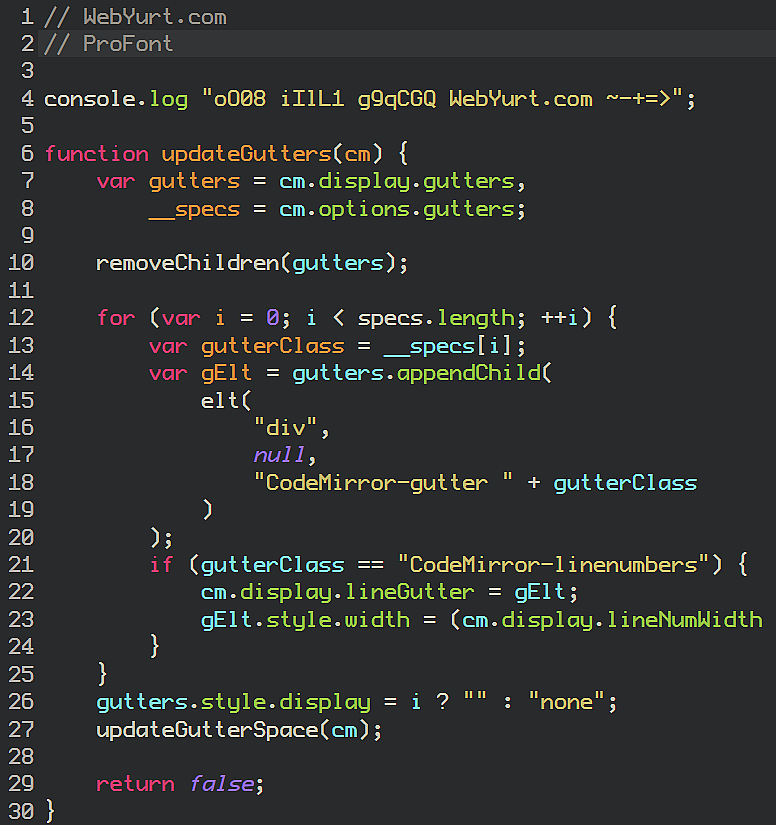
95. Proggy Vector Font (Tristan Grimmer, 2006)
Proggy Vector Font, created by Tristan Grimmer in 2006, is a monospaced font optimized for coding and programming. It is known for its clarity and is designed to enhance code readability.
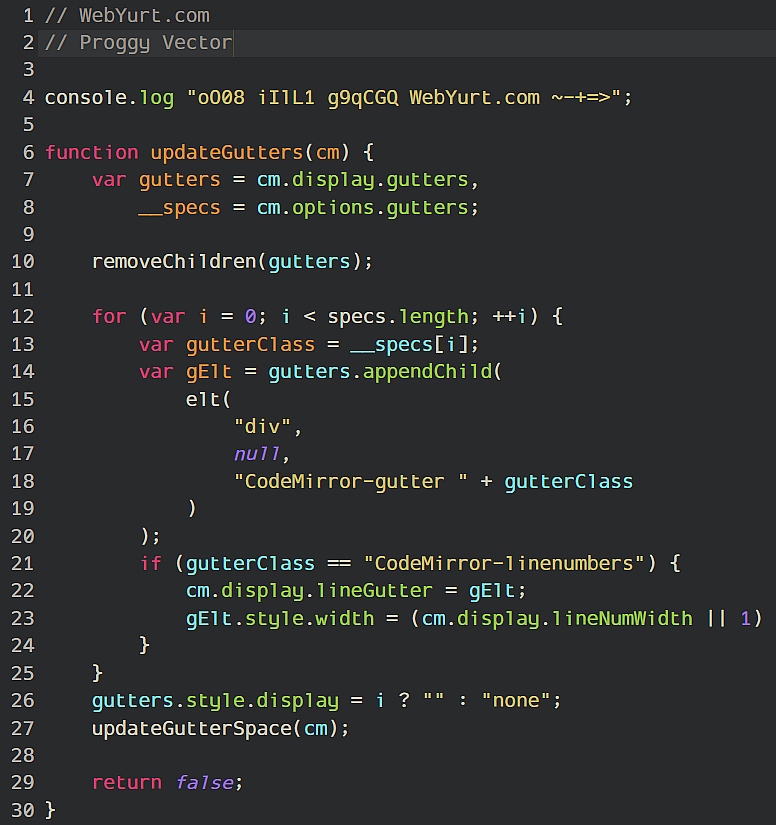
96. Proggy Clean (Tristan Grimmer, 2004)
Proggyclean, designed by Tristan Grimmer in 2004, is a monospaced font known for its simplicity and readability. It offers a clean and straightforward appearance, making it suitable for coding and technical documents.
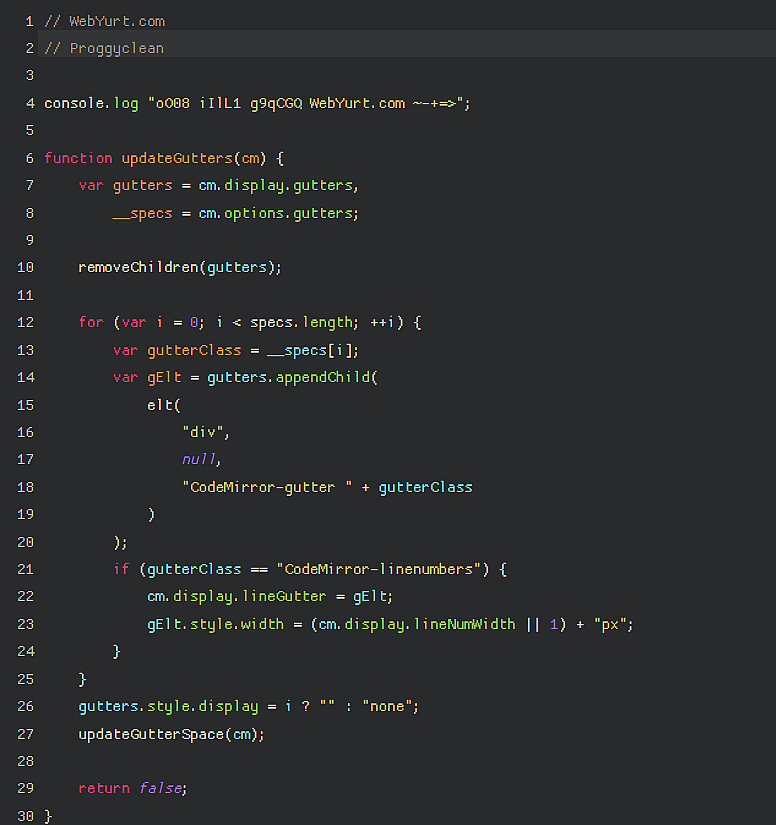
97. Proggysquare (Tristan Grimmer, 2004)
Proggysquare, created by Tristan Grimmer in 2004, is a monospaced font known for its square and distinct letterforms. It provides a unique style for coding and design projects.
98. Pulse Sans Virgin (Michel Troy, 2004)
Pulse Sans Virgin, designed by Michel Troy in 2004, is a sans-serif font with a clean and modern appearance. While not monospaced, it offers readability and style for various text and design applications.
99. Qarmic Sans (Paul Reis, 2011)
Qarmic Sans, created by Paul Reis in 2011, is a sans-serif font known for its simplicity and readability. While not monospaced, it offers a clean and straightforward style for text-based projects.
100. Quinze Font (Lautaro Hourcade, 2009)
Quinze Font, designed by Lautaro Hourcade in 2009, is a monospaced font known for its clarity and legibility. It provides a straightforward appearance ideal for coding and technical documents.
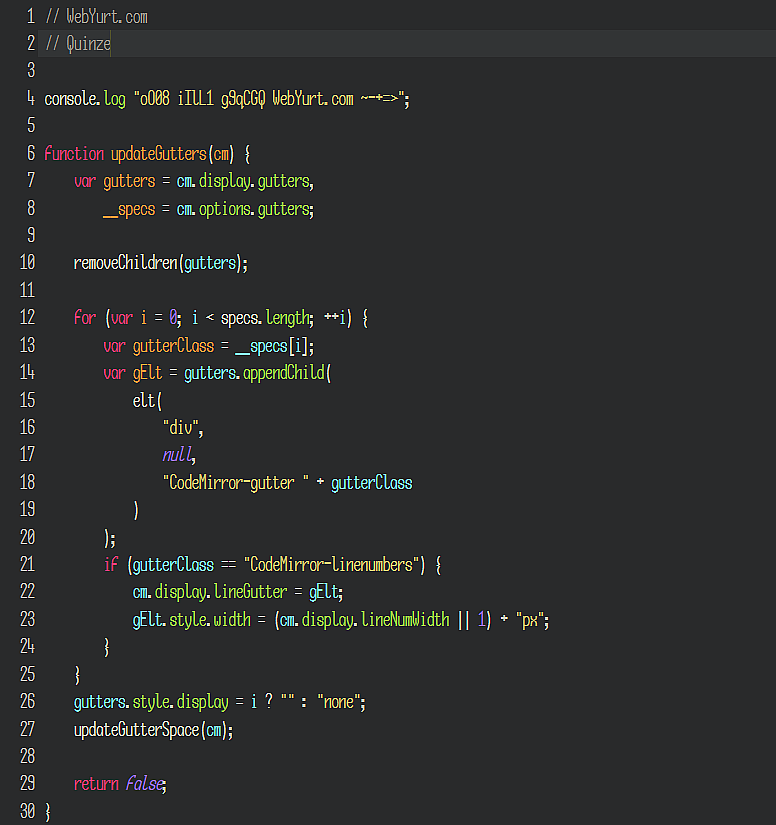
101. Railway (Greg Fleming, 2010)
Railway, designed by Greg Fleming in 2010, is a modern monospaced font known for its clean and stylish appearance. It is suitable for coding, design, and various text-based projects.
102. Raleway Dots (Matt McInerney, Pablo Impallari, Rodrigo Fuenzalida, 2016)
Raleway Dots, created by Matt McInerney, Pablo Impallari, and Rodrigo Fuenzalida in 2016, is a unique display font that features dots within the letterforms. It adds a distinct visual style to creative projects.
103. Roboto Mono (Christian Robertson, 2013)
Roboto Mono, designed by Christian Robertson in 2013, is a monospaced font and part of the Roboto font family. It is known for its modern and clean design, making it a popular choice for coding and technical documents.
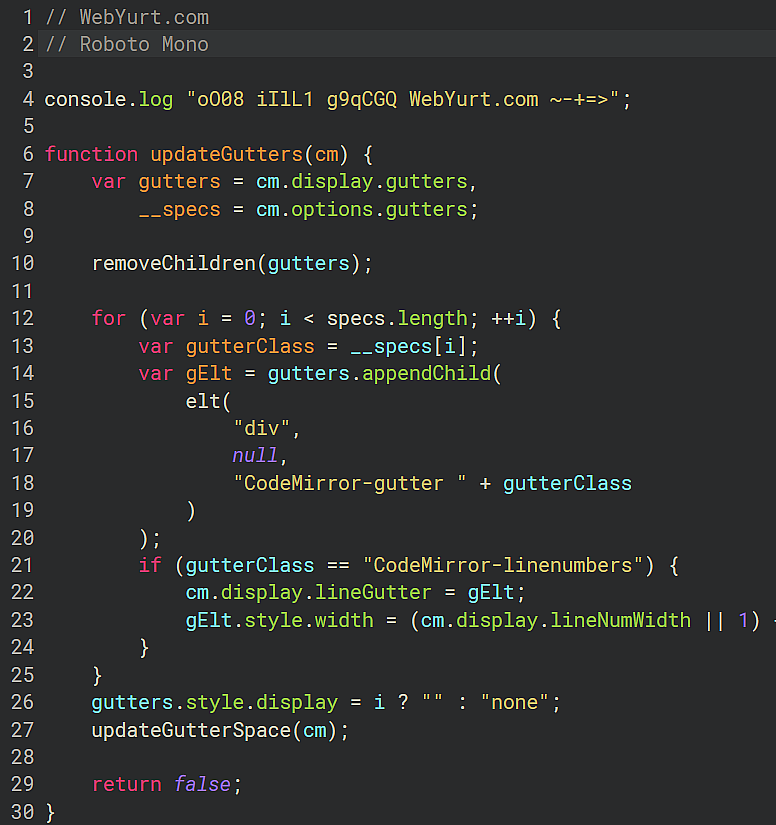
104. SF Mono (Apple Inc., 2016)
SF Mono is a monospaced font developed by Apple Inc. in 2016. It is specifically designed for Apple's macOS and is used in Terminal and other system applications. It offers a sleek and readable appearance.
105. SaxMono Font (Raph Levien, 2006)
SaxMono Font, designed by Raph Levien in 2006, is a monospaced font known for its clean and minimalistic design. It offers clarity and is suitable for coding and programming tasks.
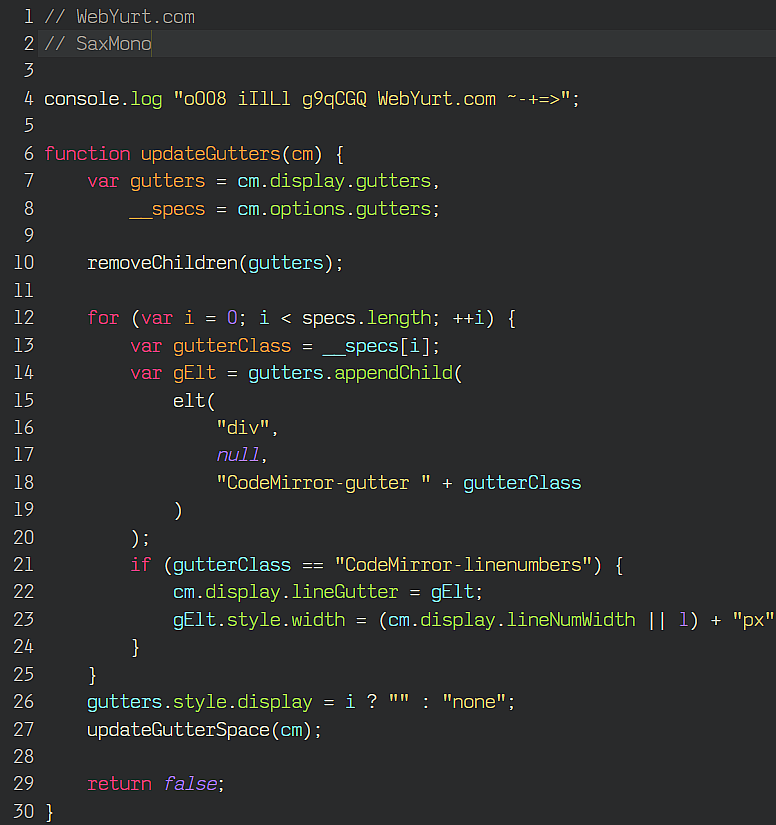
106. Share Tech Mono Font (Carrois Corporate, 2011)
Share Tech Mono Font, created by Carrois Corporate in 2011, is a monospaced font optimized for coding and technical documents. It provides a clean and straightforward appearance.
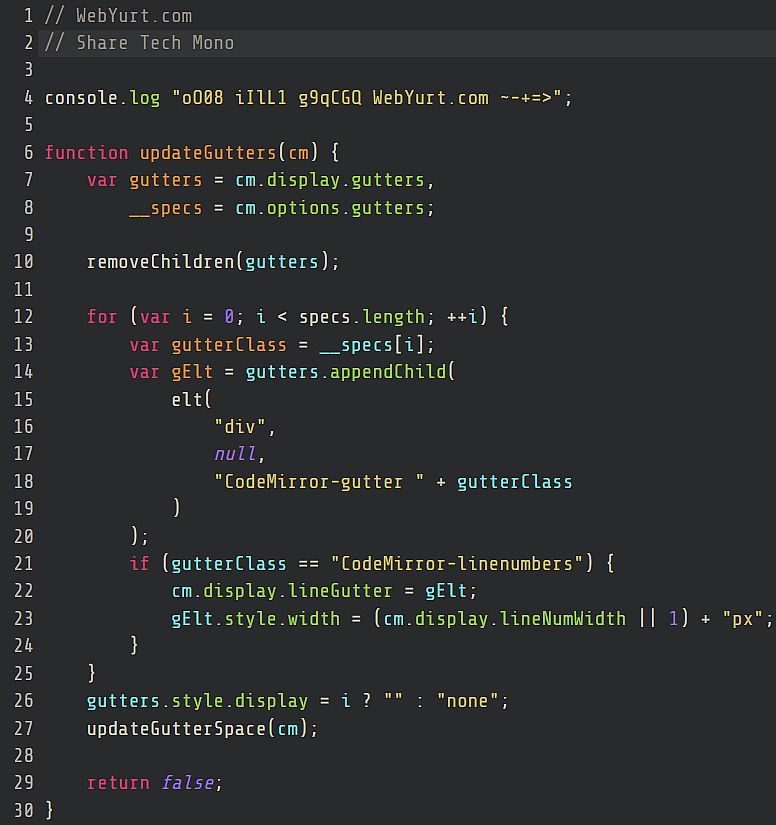
107. Shure Tech Mono (Aaron Anderer, 2015)
Shure Tech Mono, designed by Aaron Anderer in 2015, is a monospaced font tailored for coding and programming. It offers readability and is suitable for various text-based projects.
108. Sometype Mono Font (Ivan Gladkikh)
Sometype Mono Font is a monospaced typeface, but the specific creator and date are unknown. It is designed for coding and programming tasks, focusing on clarity and readability.
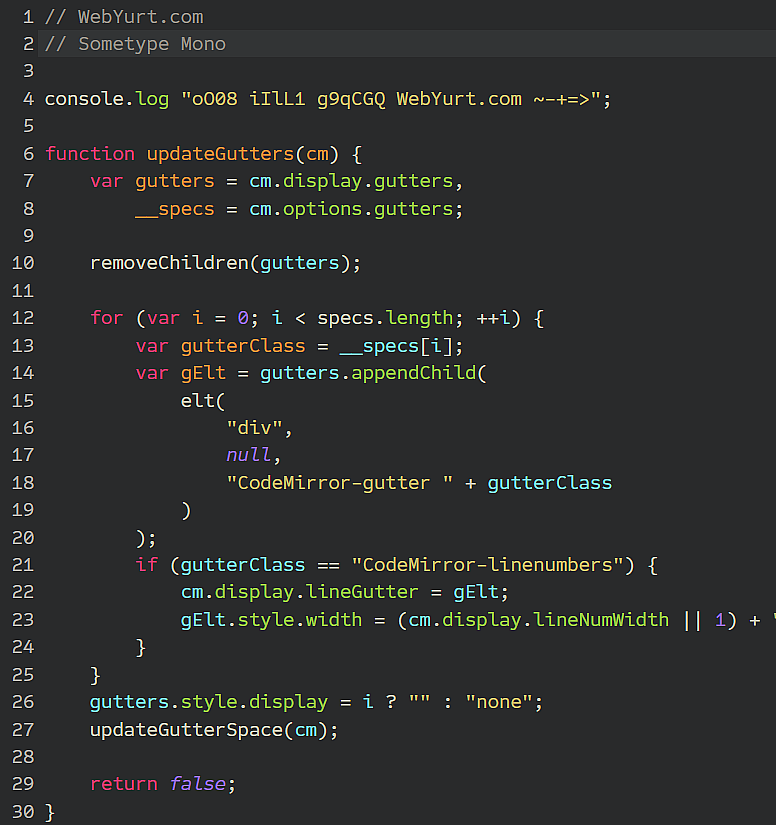
109. Source Code Pro (Adobe, 2012)
Source Code Pro, created by Adobe in 2012, is a monospaced font known for its readability and extensive character support. It is suitable for coding, technical documents, and text-based projects.

110. Sudo (Edd Barrett, 2012)
Sudo, designed by Edd Barrett in 2012, is a monospaced font known for its clean and modern appearance. It offers clarity and is suitable for coding and technical documents.
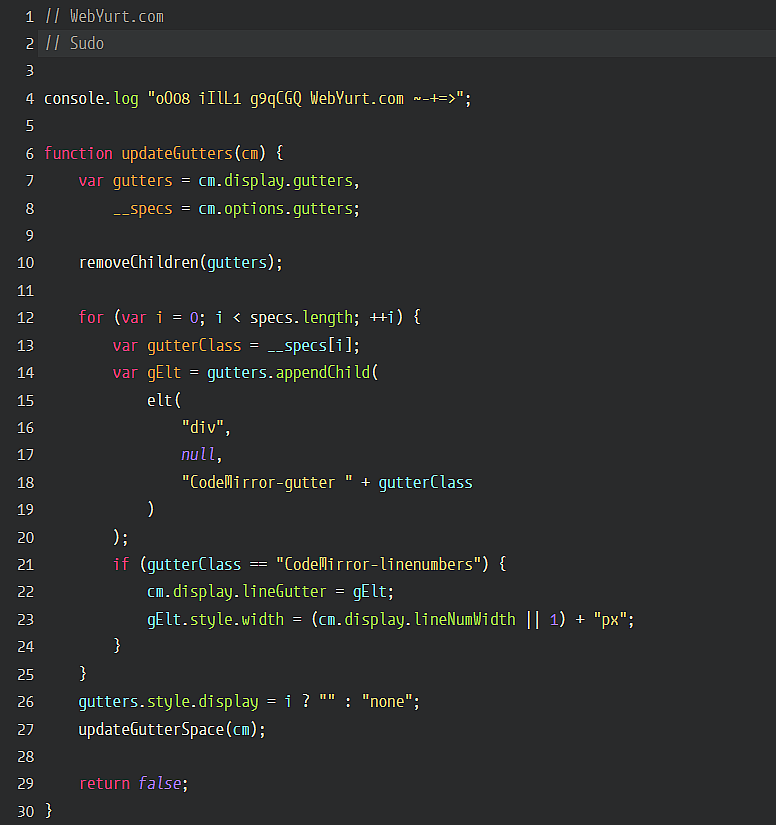
111. TeX Gyre Cursor Font (GUST e-foundry)
TeX Gyre Cursor Font is a monospaced typeface created by GUST e-foundry. It is designed with a focus on clarity and readability, making it suitable for coding and technical documents.

112. TheSansMonoCondensed (Lucas de Groot, 2008)
TheSansMonoCondensed, designed by Lucas de Groot in 2008, is a condensed monospaced font known for its modern and clean appearance. It offers space-saving qualities and is suitable for coding and design work.
113. Thonburi (Microsoft, 2007)
Thonburi, developed by Microsoft in 2007, is a versatile sans-serif font known for its clarity and readability. While not monospaced, it is suitable for various text-based applications.
114. Tinos (Steve Matteson, 2010)
Tinos, created by Steve Matteson in 2010, is a monospaced font designed with clarity in mind. It offers a clean and straightforward appearance, making it a dependable choice for coding and technical documents.
115. Ubuntu Mono (Dalton Maag, 2010)
Ubuntu Mono, designed by Dalton Maag in 2010, is a monospaced font that is part of the Ubuntu font family. It offers a modern and clean appearance, making it suitable for coding and design projects.

116. Unifont (Roman Czyborra, 1998)
Unifont, created by Roman Czyborra in 1998, is a versatile font known for its extensive character support. It is suitable for various text and coding applications.
117. VT323 (Peter Hull, 2012)
VT323, designed by Peter Hull in 2012, is a monospaced font known for its distinctive and retro appearance, reminiscent of old computer terminals. It adds a unique style to coding and creative projects.
118. Verily Serif Mono Font (Raph Levien, 2008)
Verily Serif Mono Font, created by Raph Levien in 2008, is a monospaced font known for its classic and timeless appearance. It is suitable for various text and coding applications.
119. Victor Mono (Rubén Fernández, 2020)
Victor Mono, designed by Rubén Fernández in 2020, is a monospaced font optimized for coding and programming. It offers a modern and stylish appearance while ensuring code readability.
120. iA Writer Mono (Oliver Reichenstein, Bold Monday, Mike Abbink, Paul van der Laan, Pieter van Rosmalen, 2018)
iA Writer Mono is a monospaced font developed collaboratively by Oliver Reichenstein, Bold Monday, Mike Abbink, Paul van der Laan, and Pieter van Rosmalen in 2018. It is known for its clean and readable design, making it suitable for writing and coding in the iA Writer app.

As selecting the perfect coding font is crucial for enhancing focus and reducing fatigue, choosing the right laptop for graphic design is vital for developers venturing into UI/UX design or visual programming. A well-equipped laptop with a sharp, colour-accurate display can make all the difference when testing interfaces, designing visual elements, or ensuring that your code translates into a seamless user experience.
Pairing the ideal coding font with a high-performance laptop creates a powerful combination for tackling design-intensive development tasks with precision and style.















COMMENTS
Great article! Very helpful for programmers!
Great list.